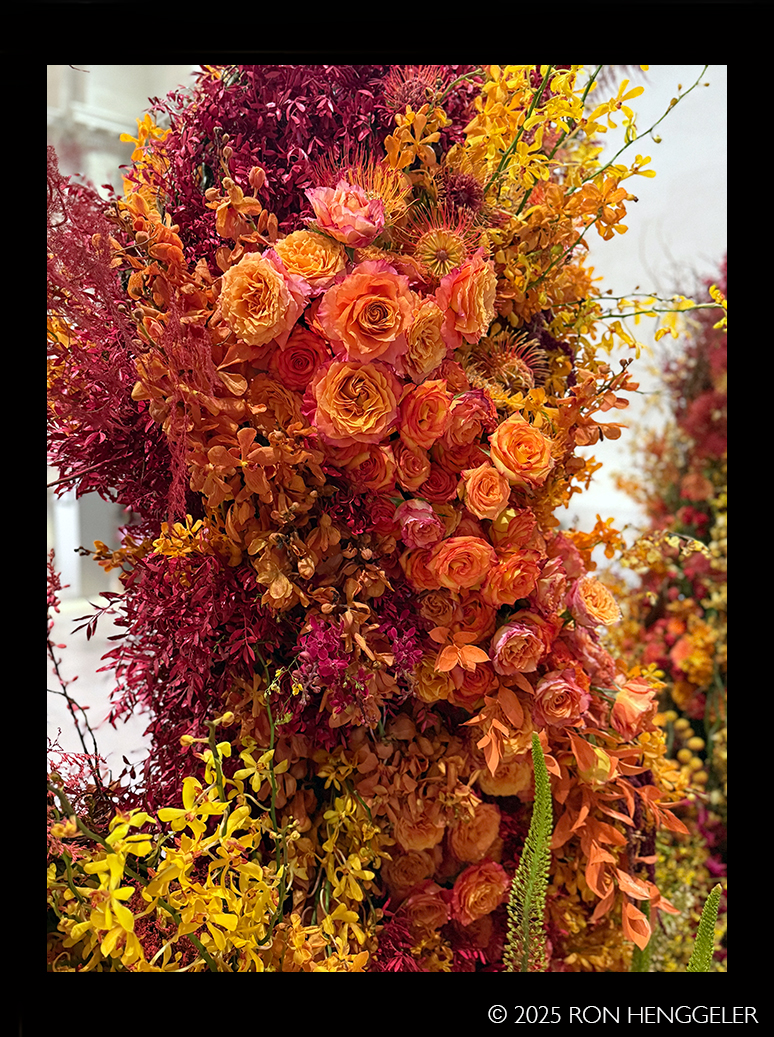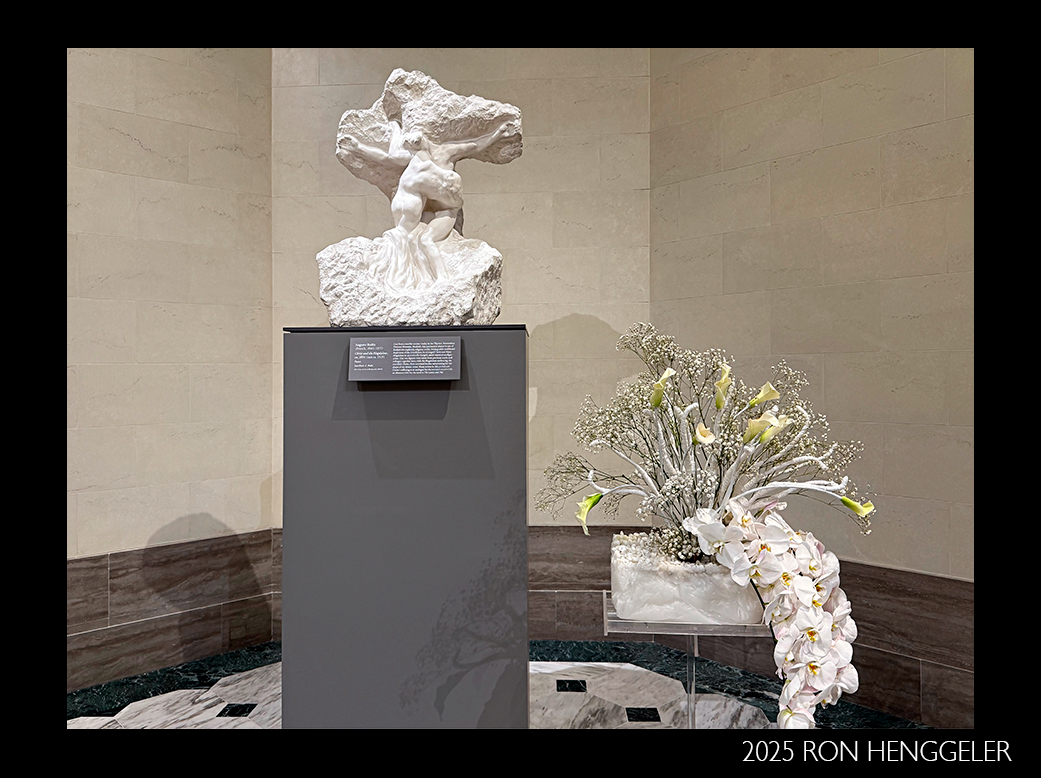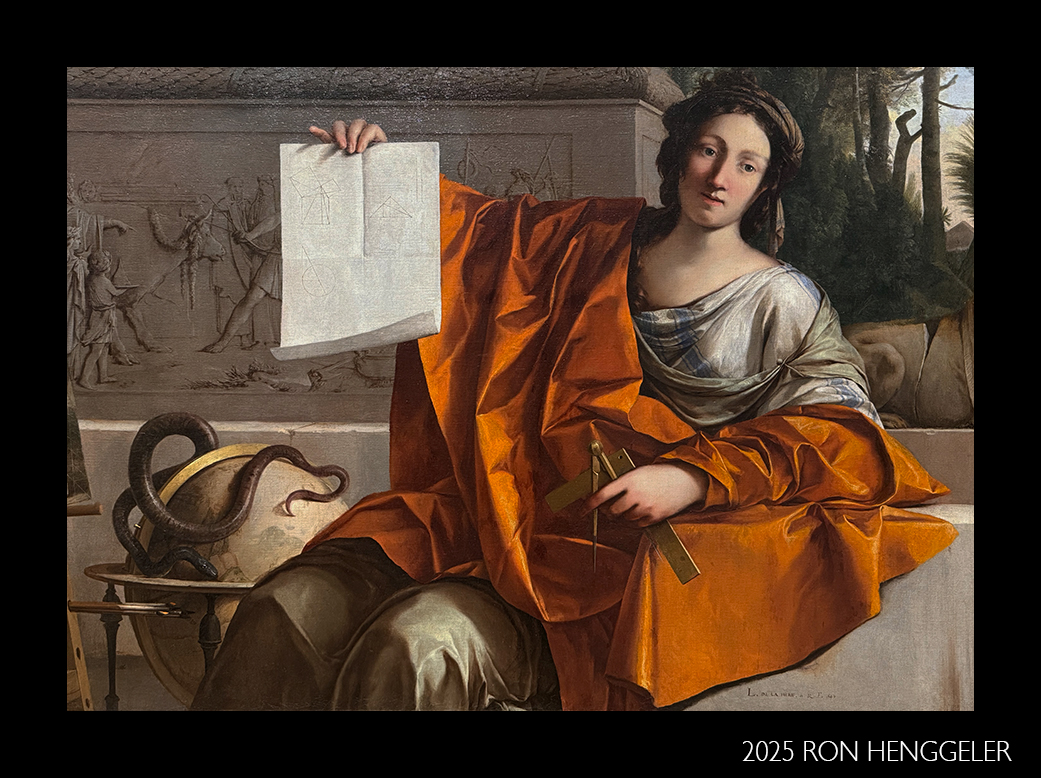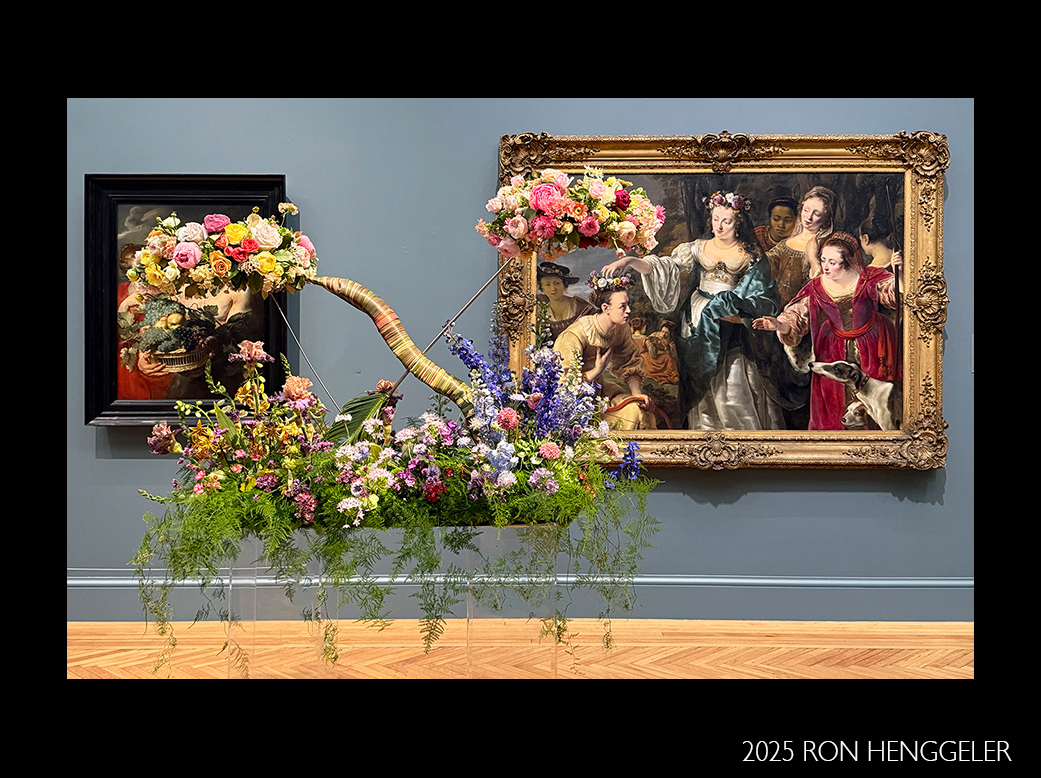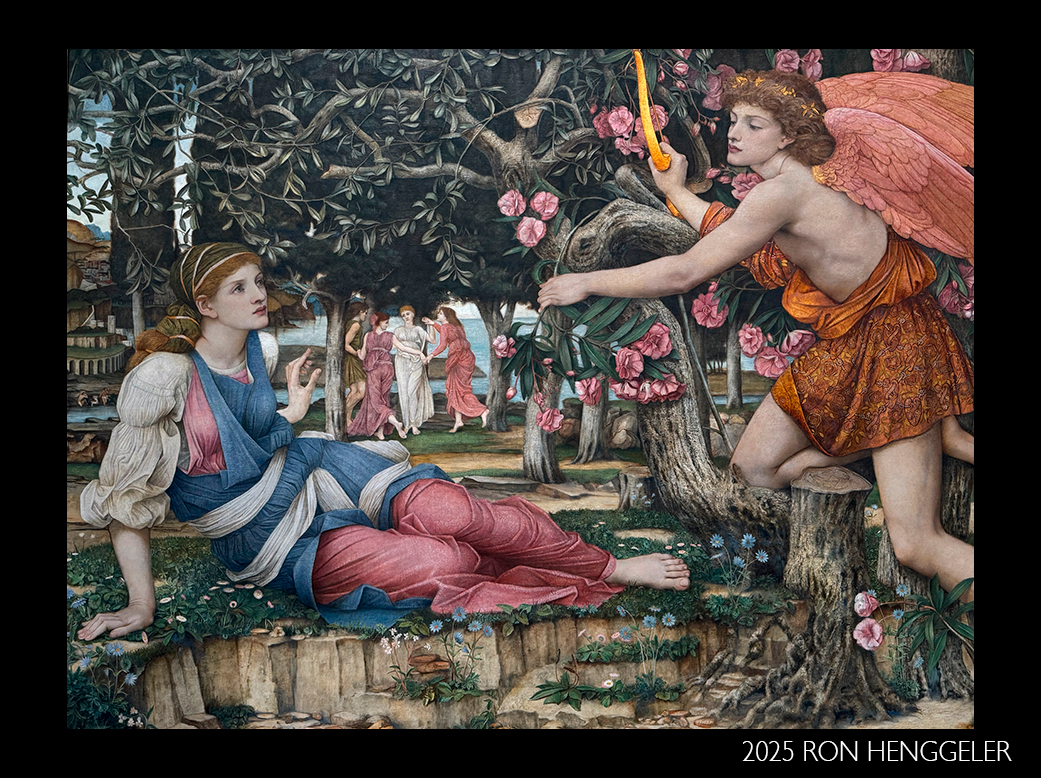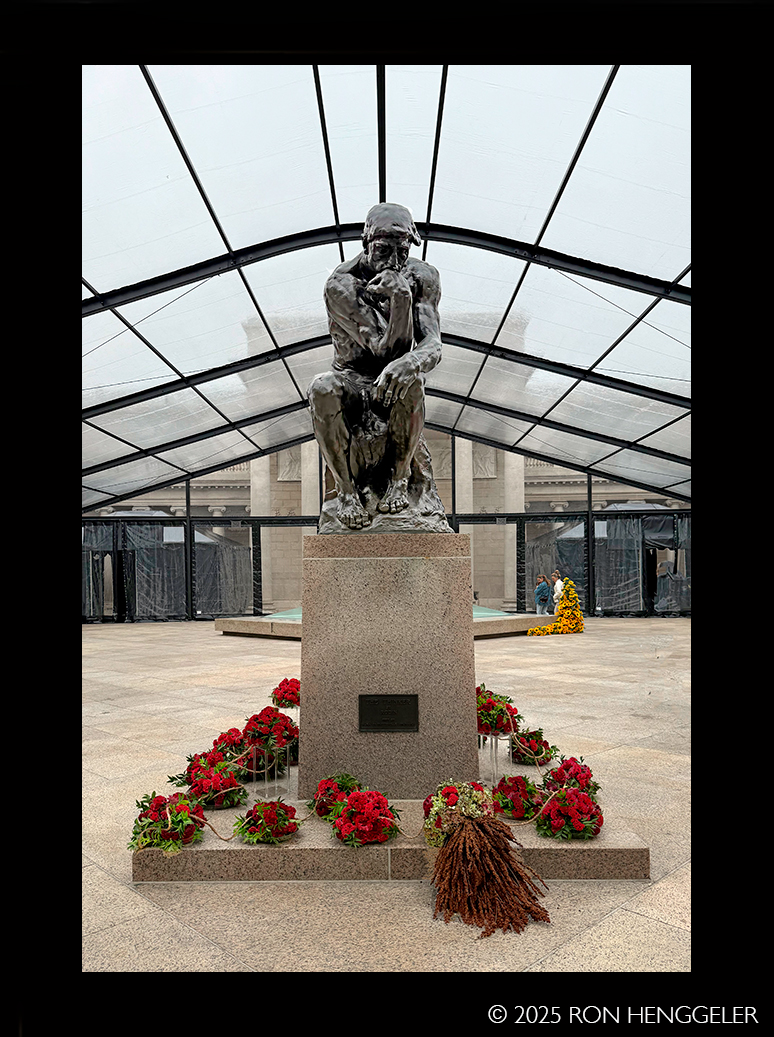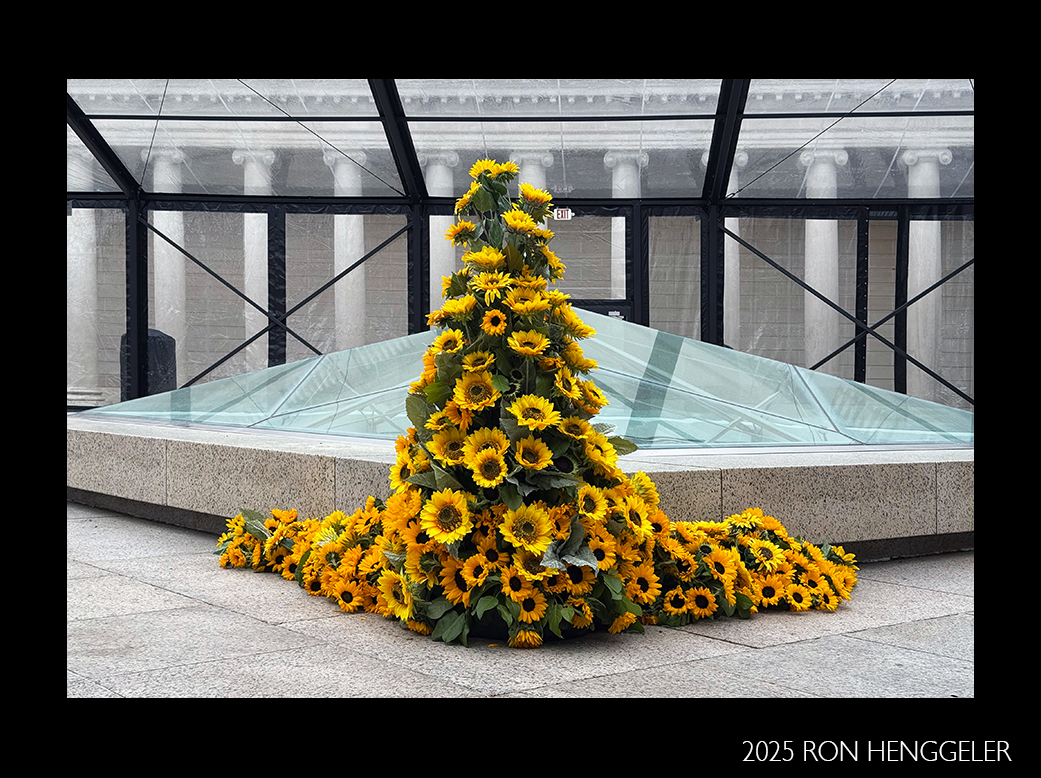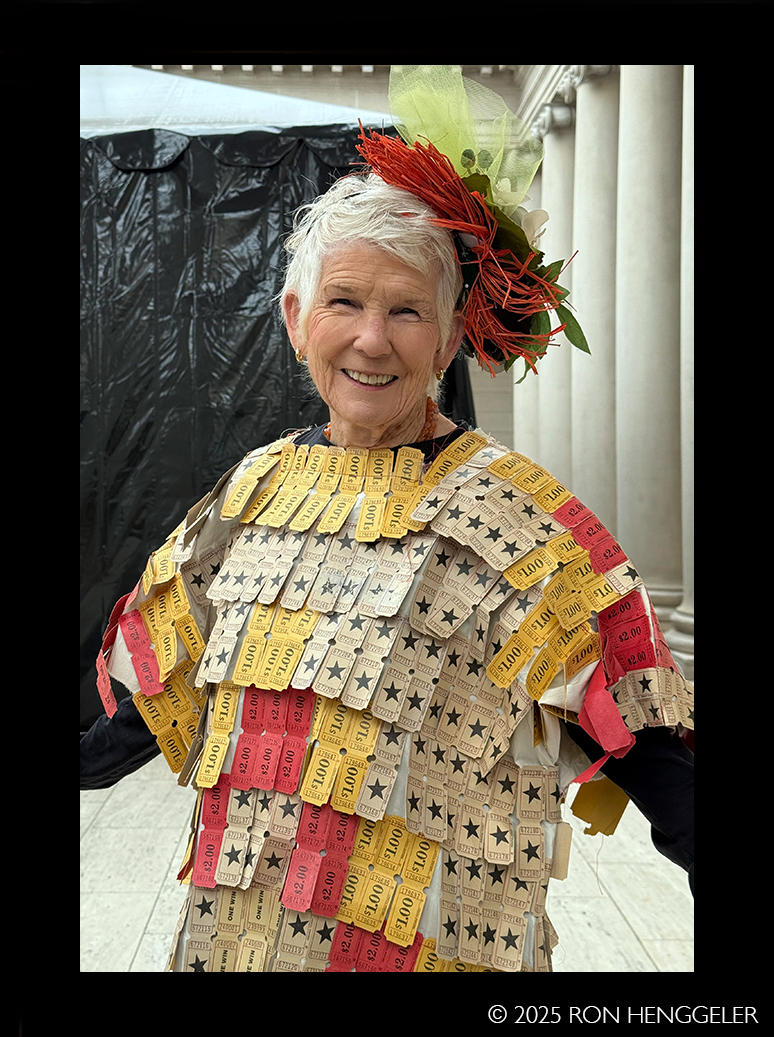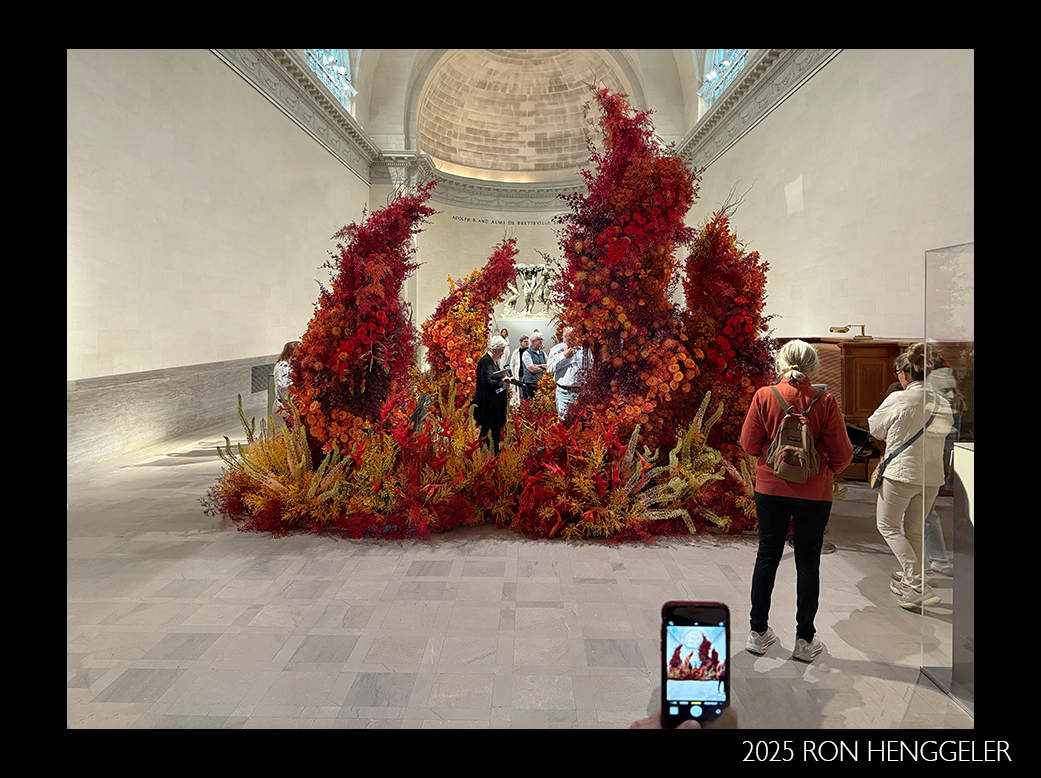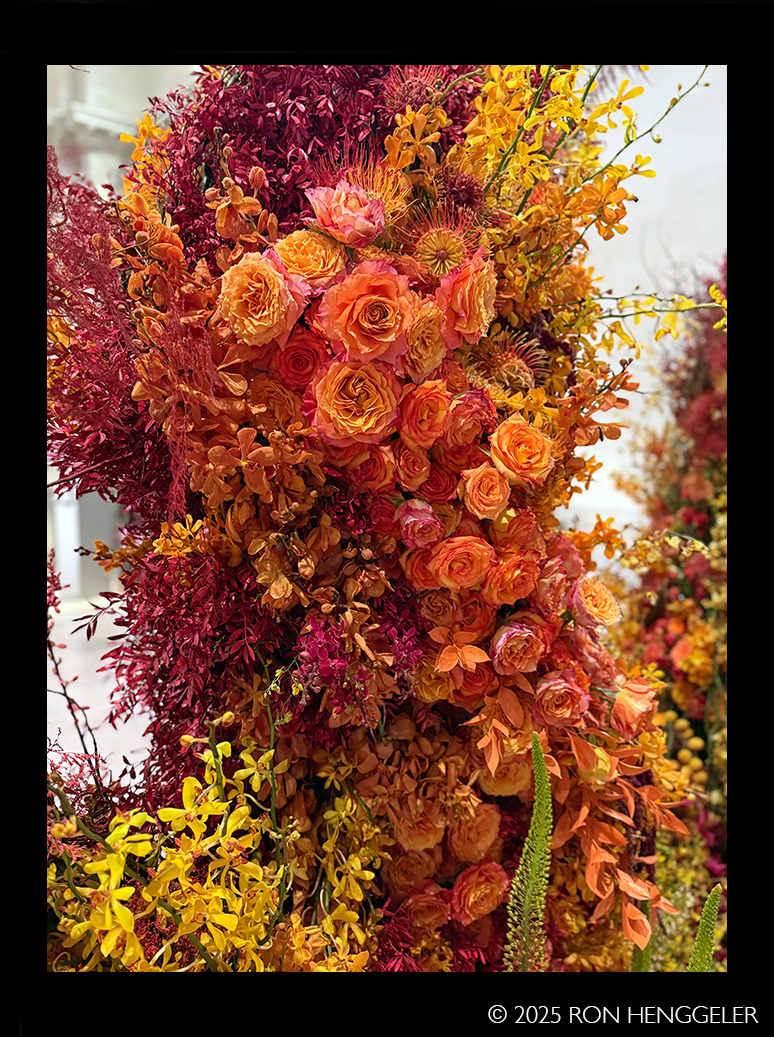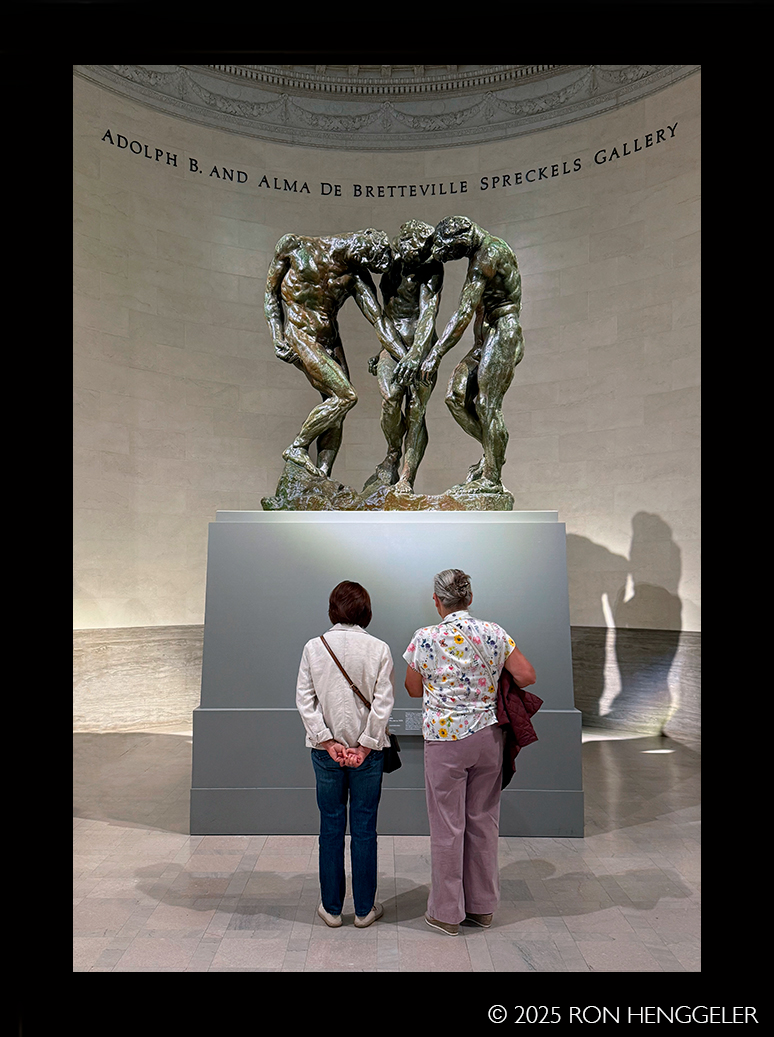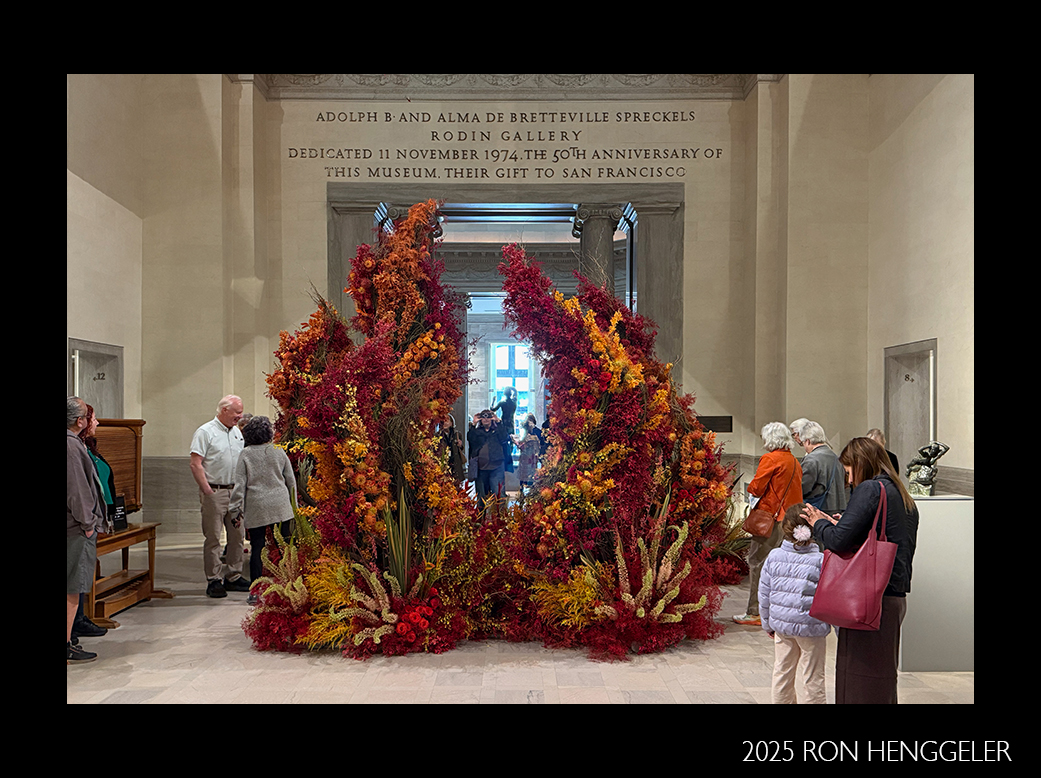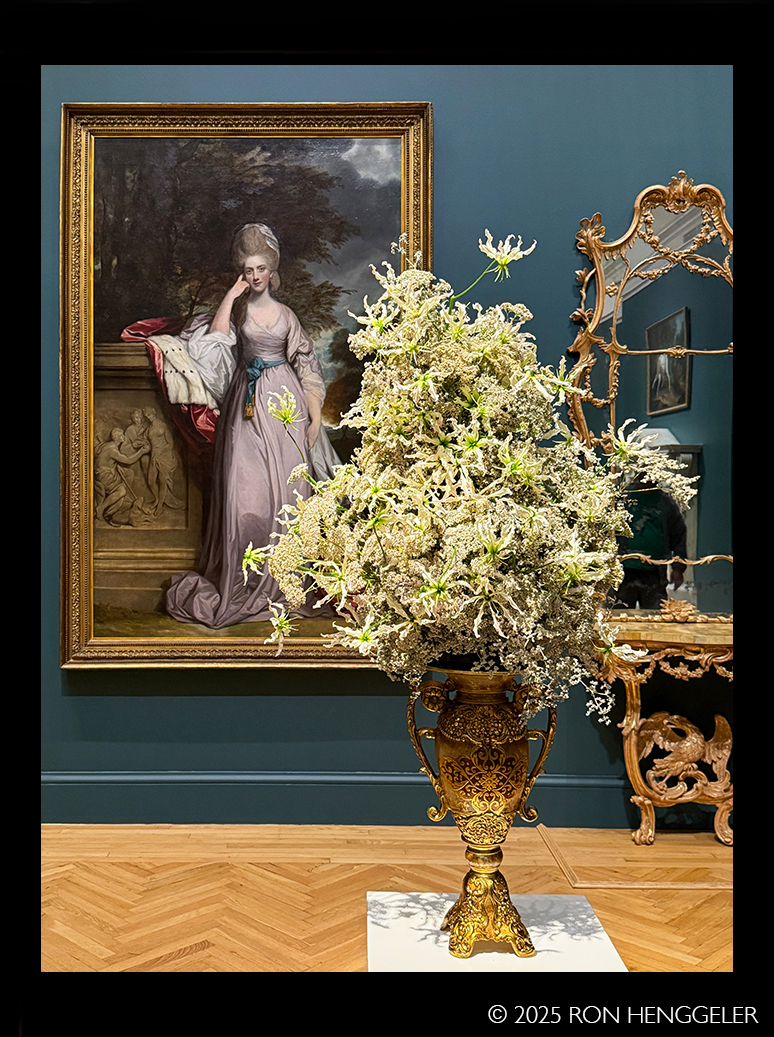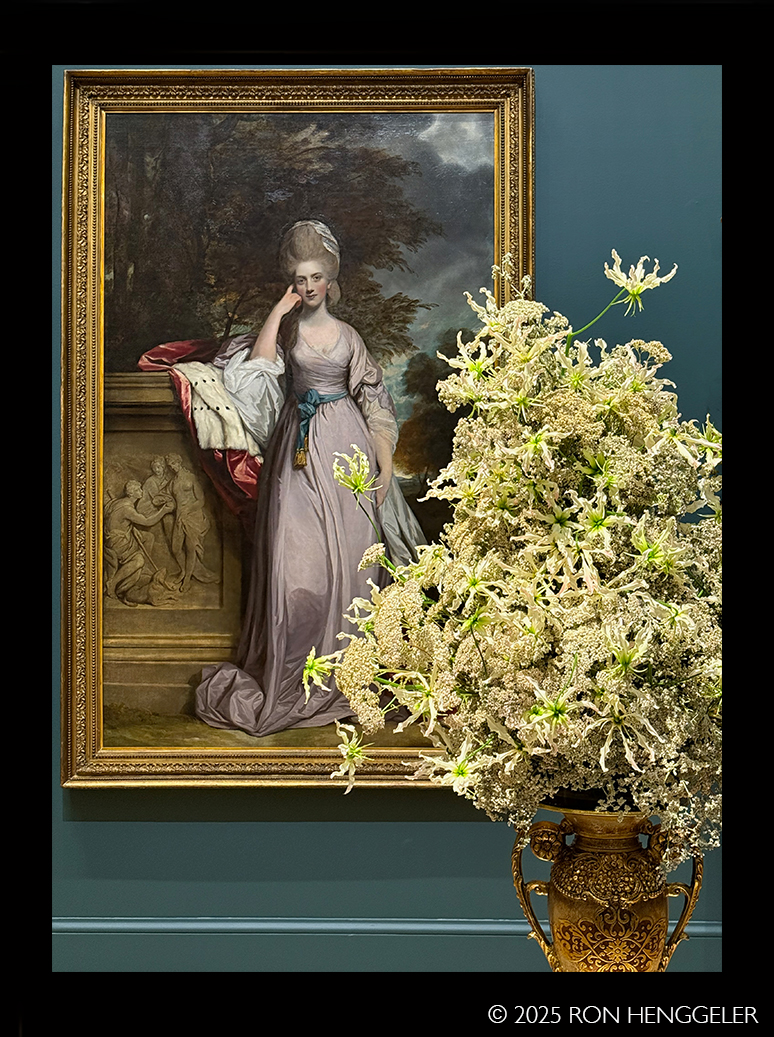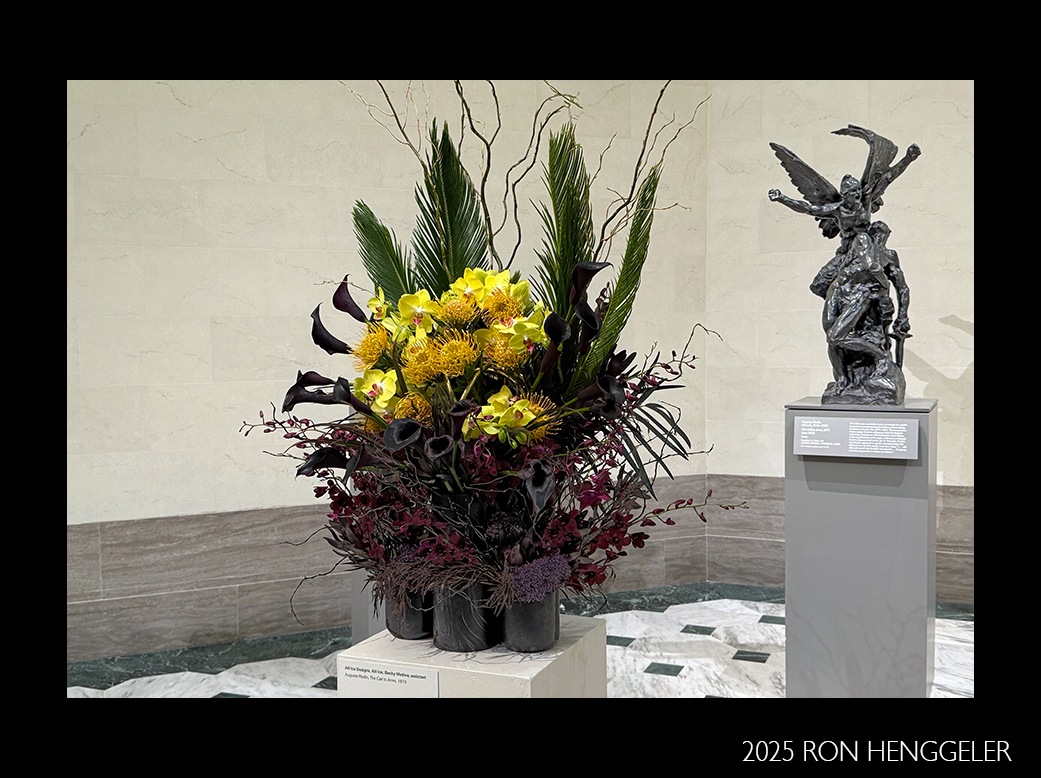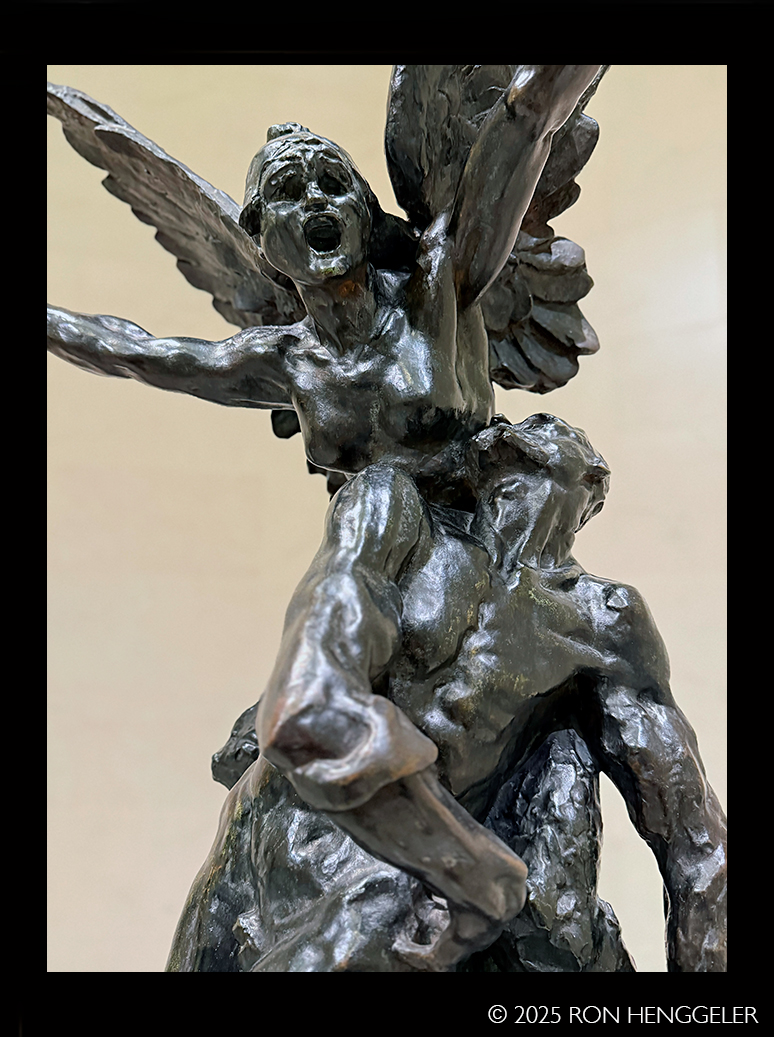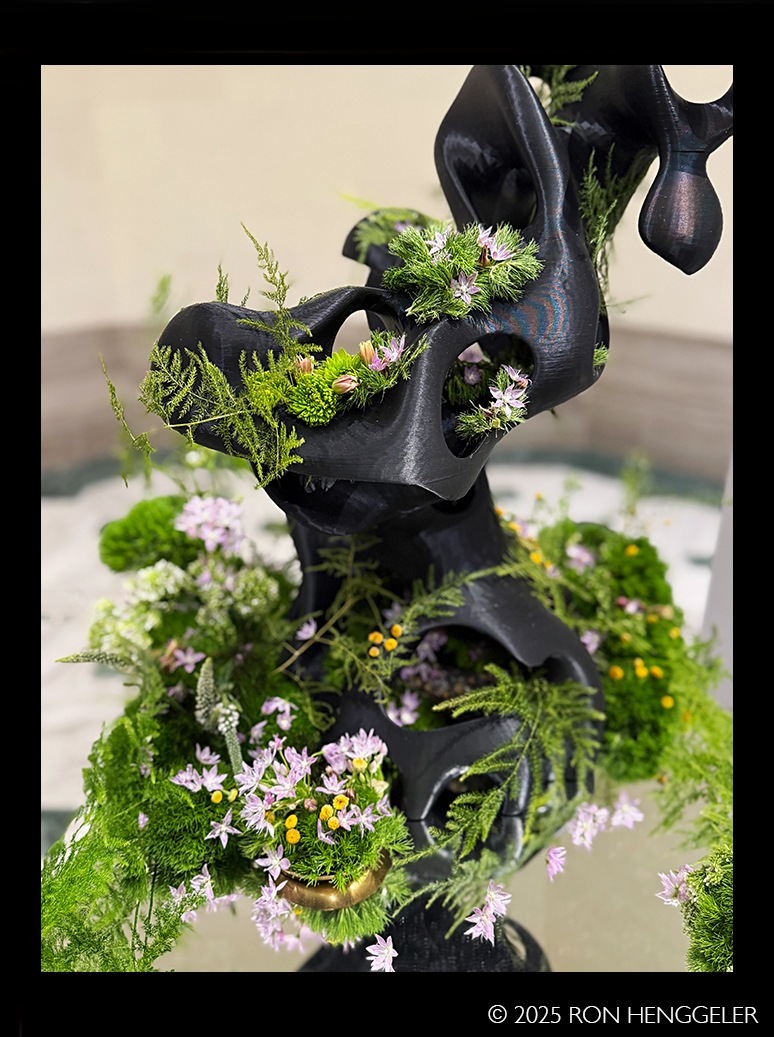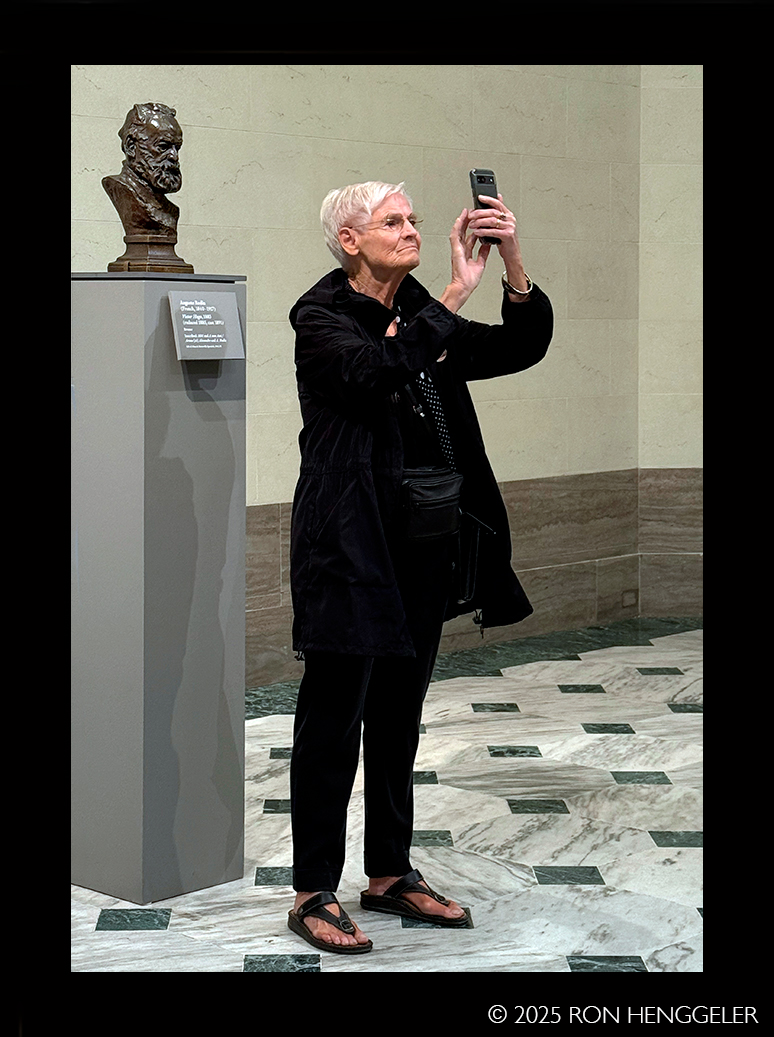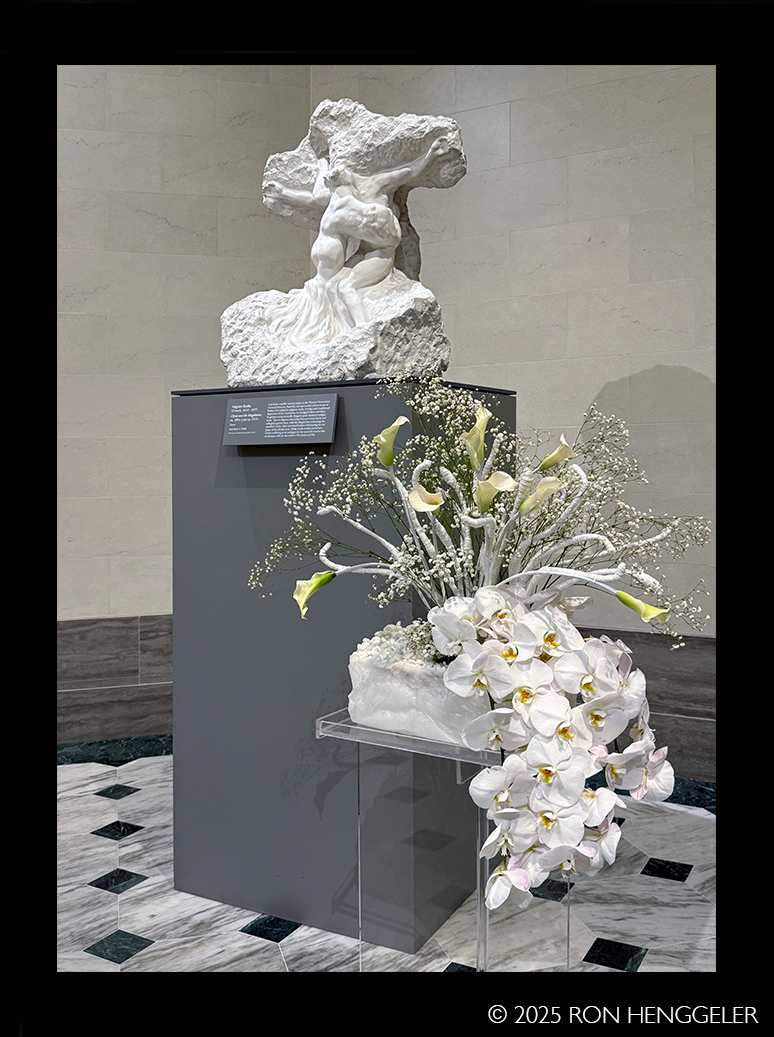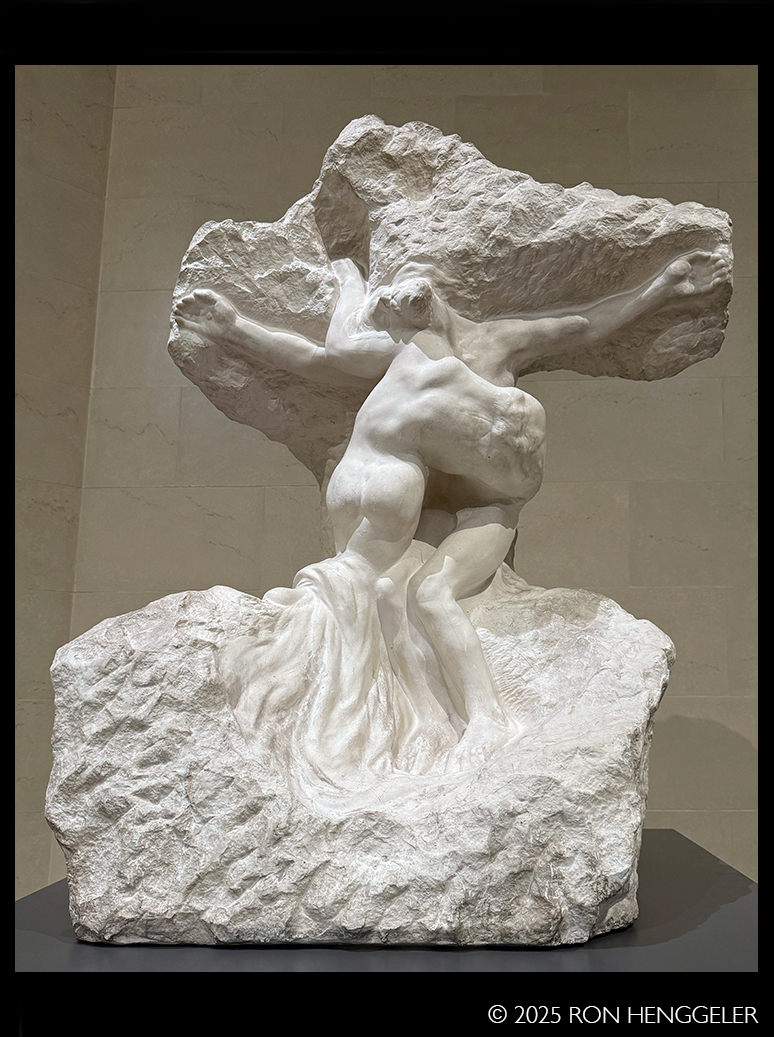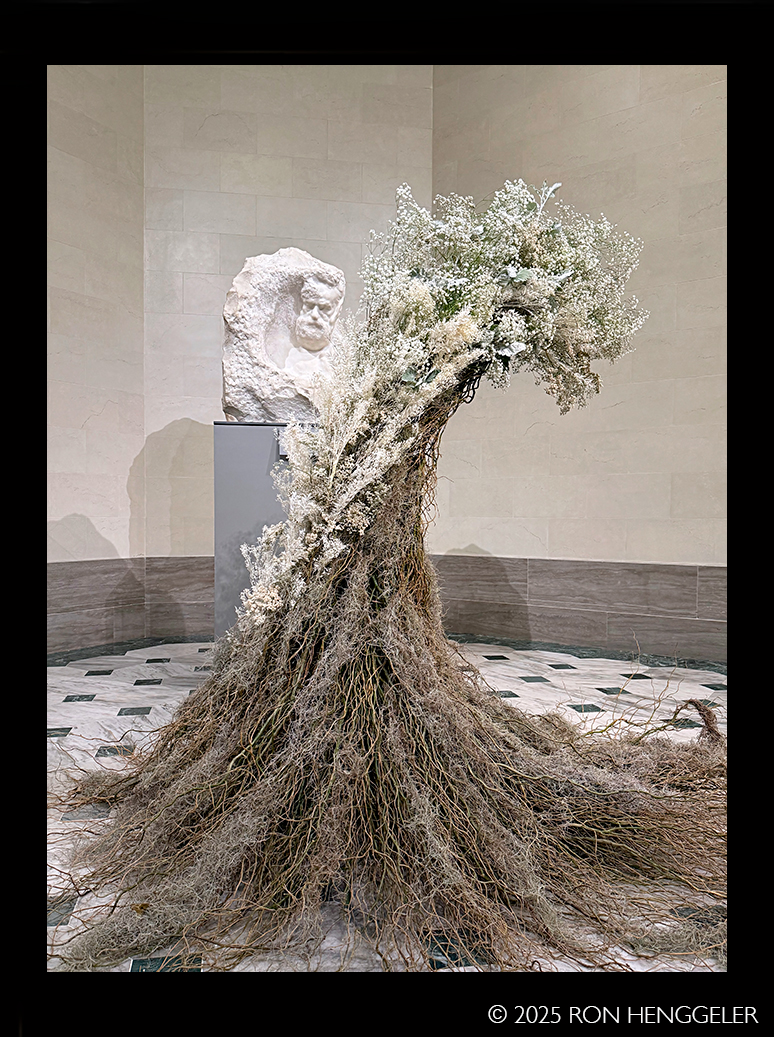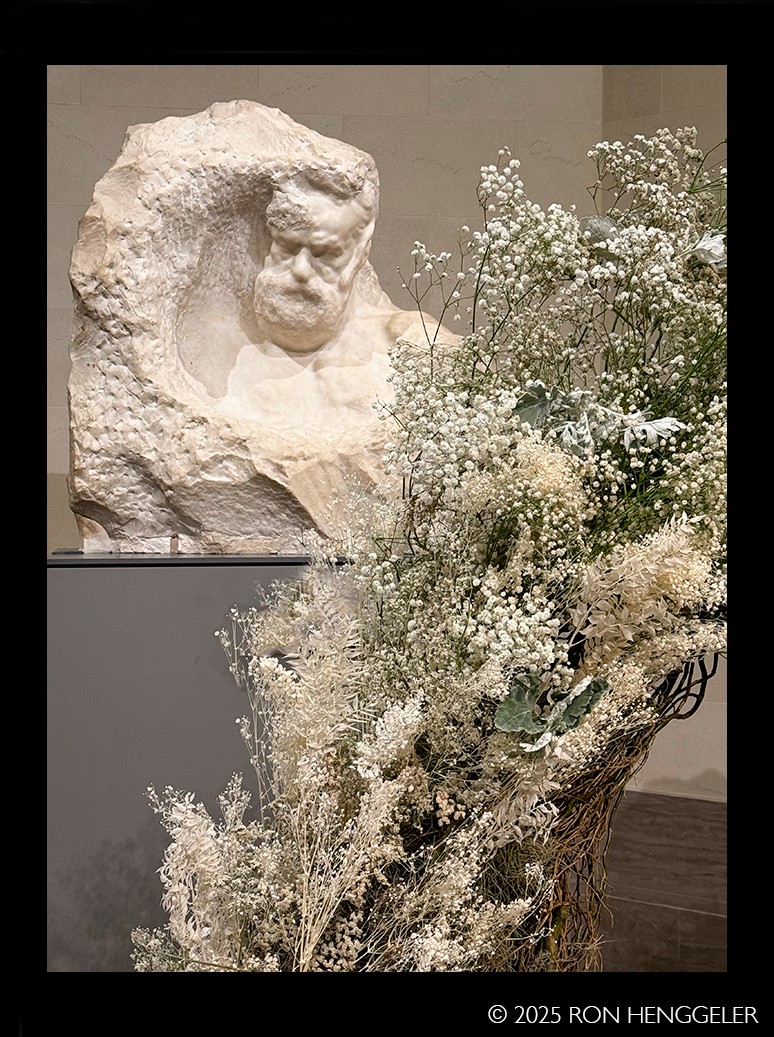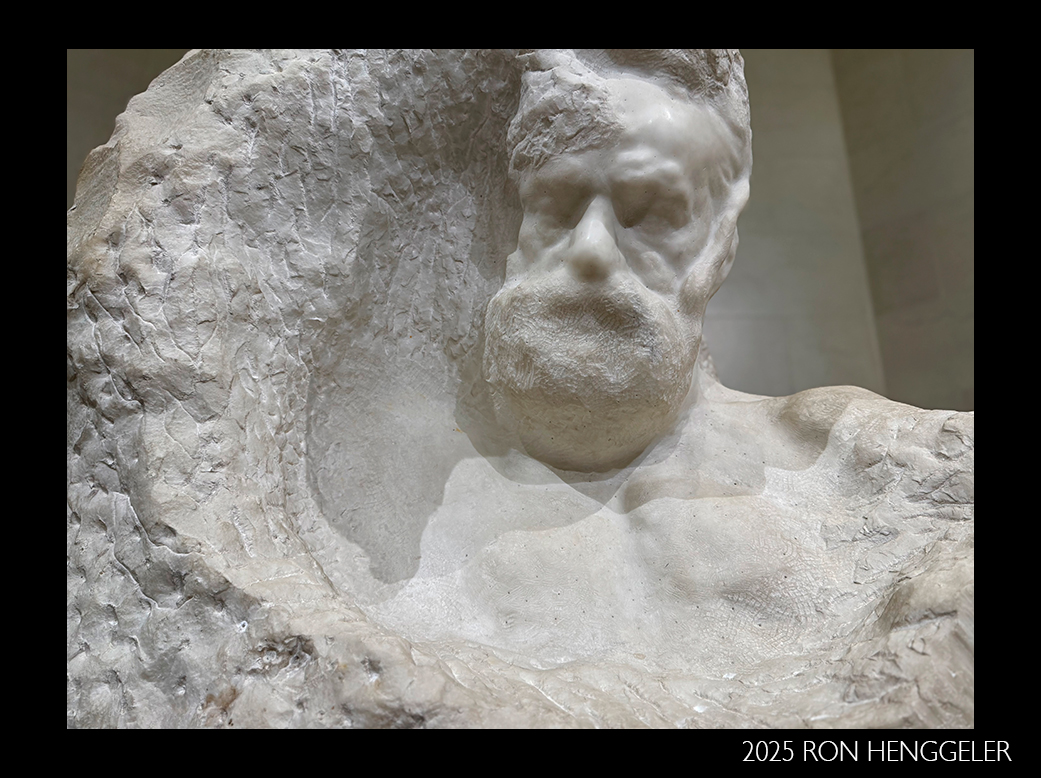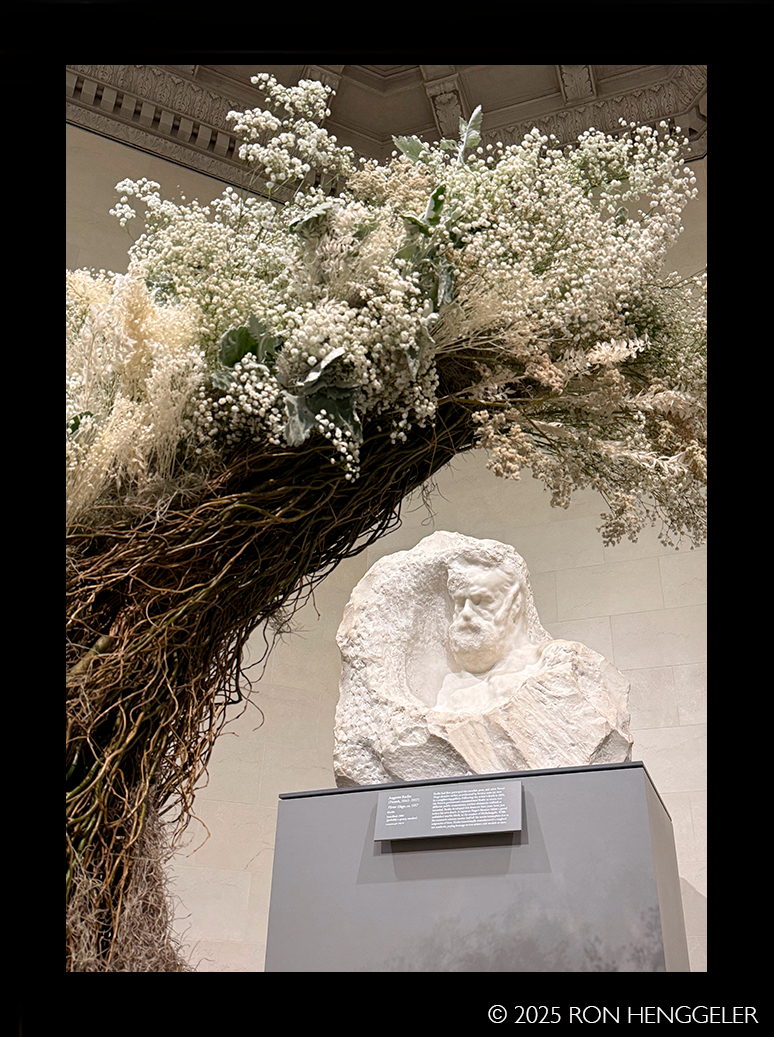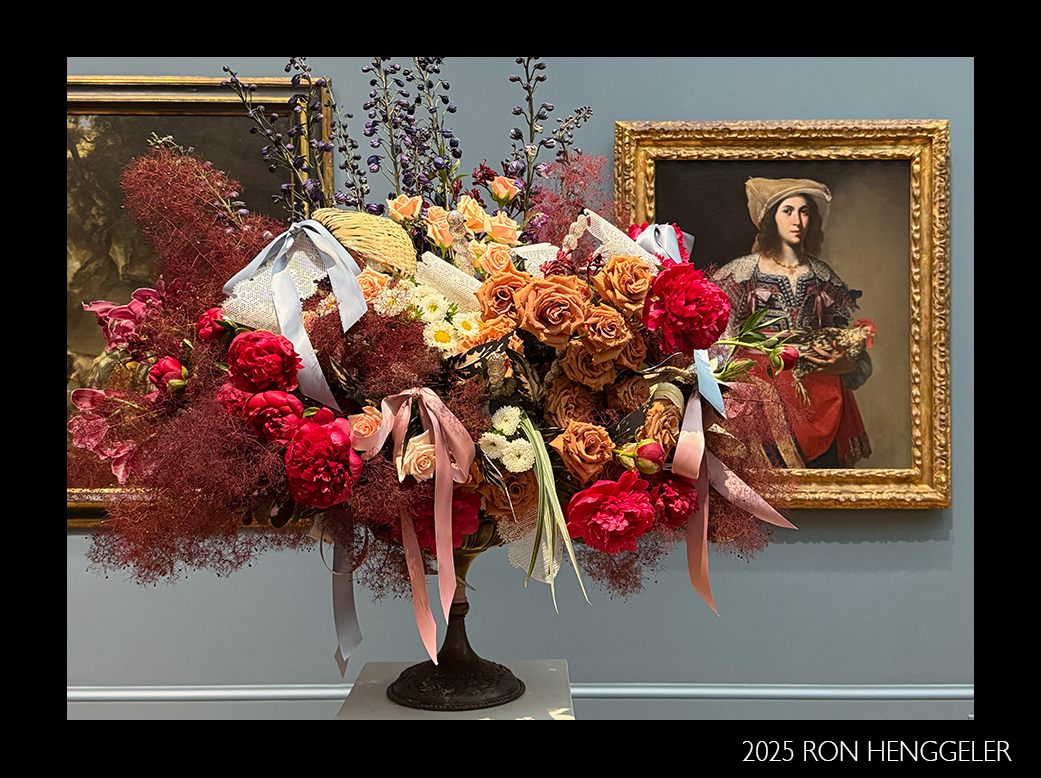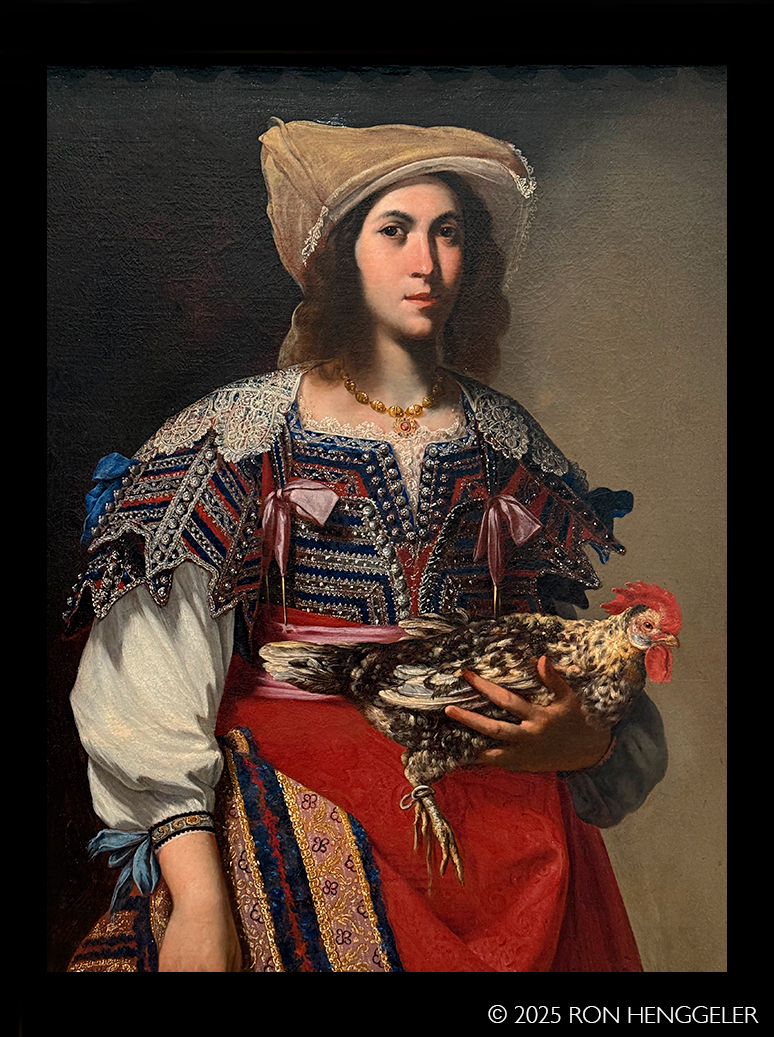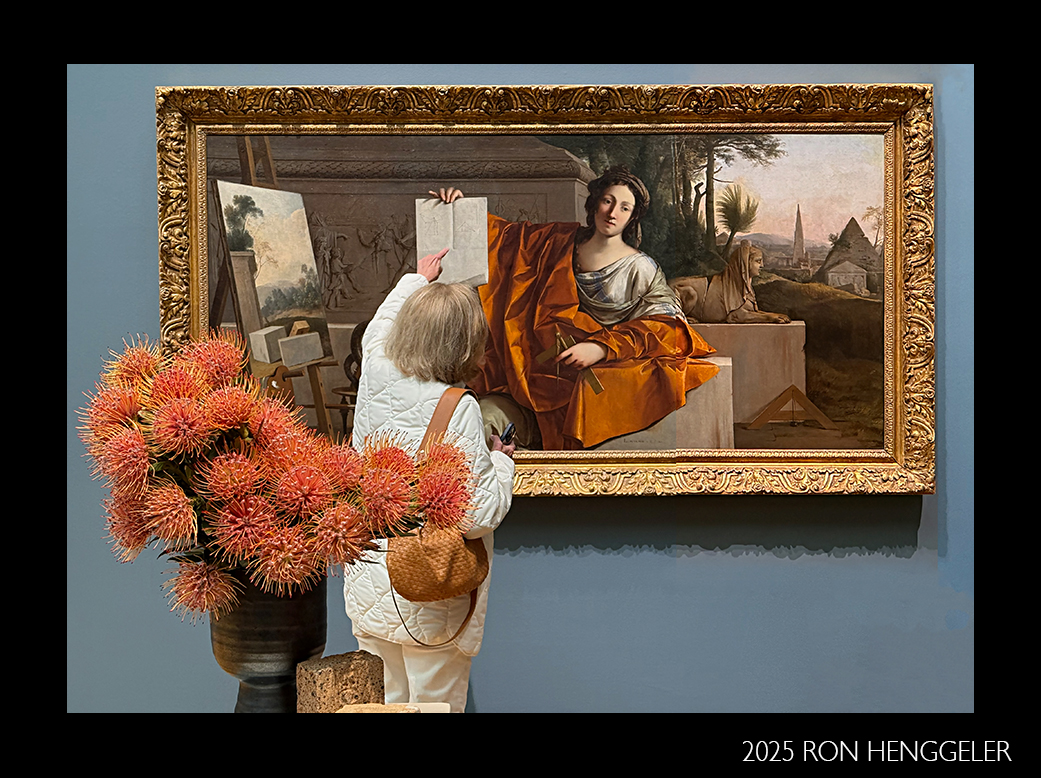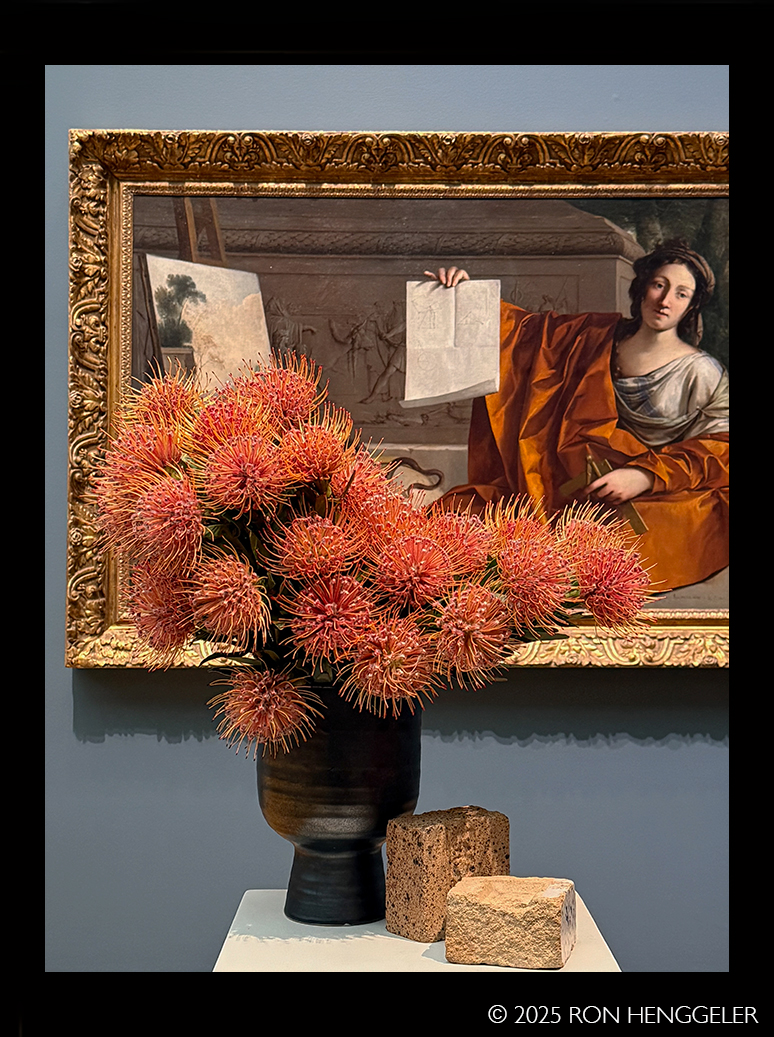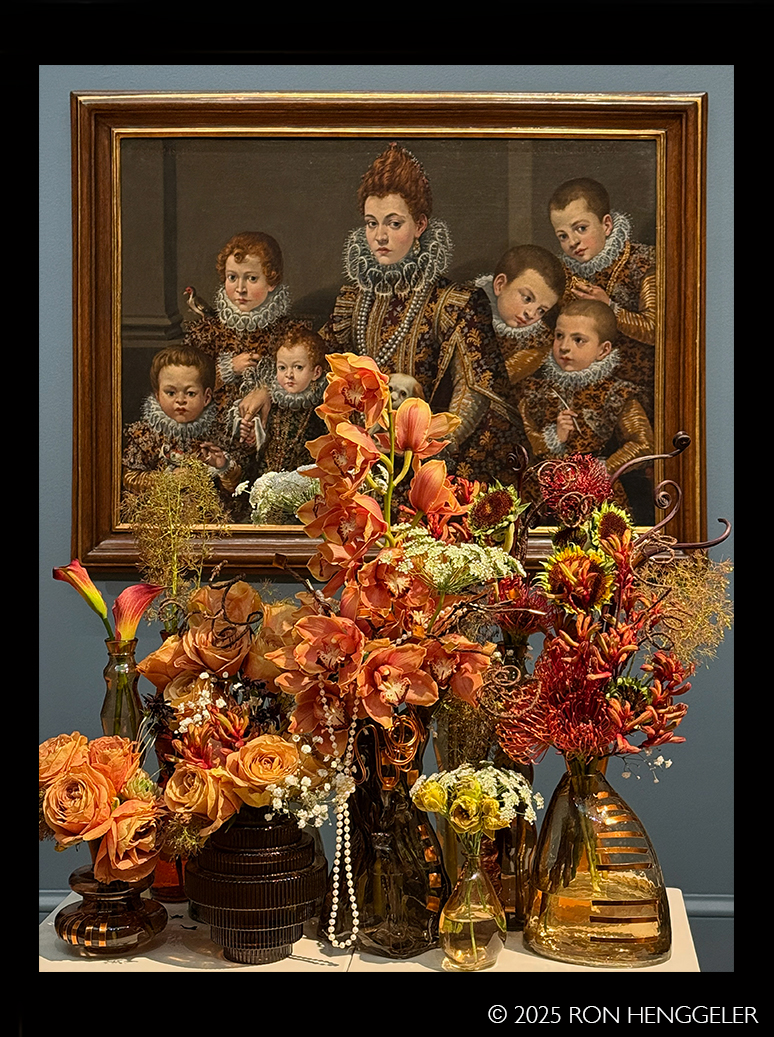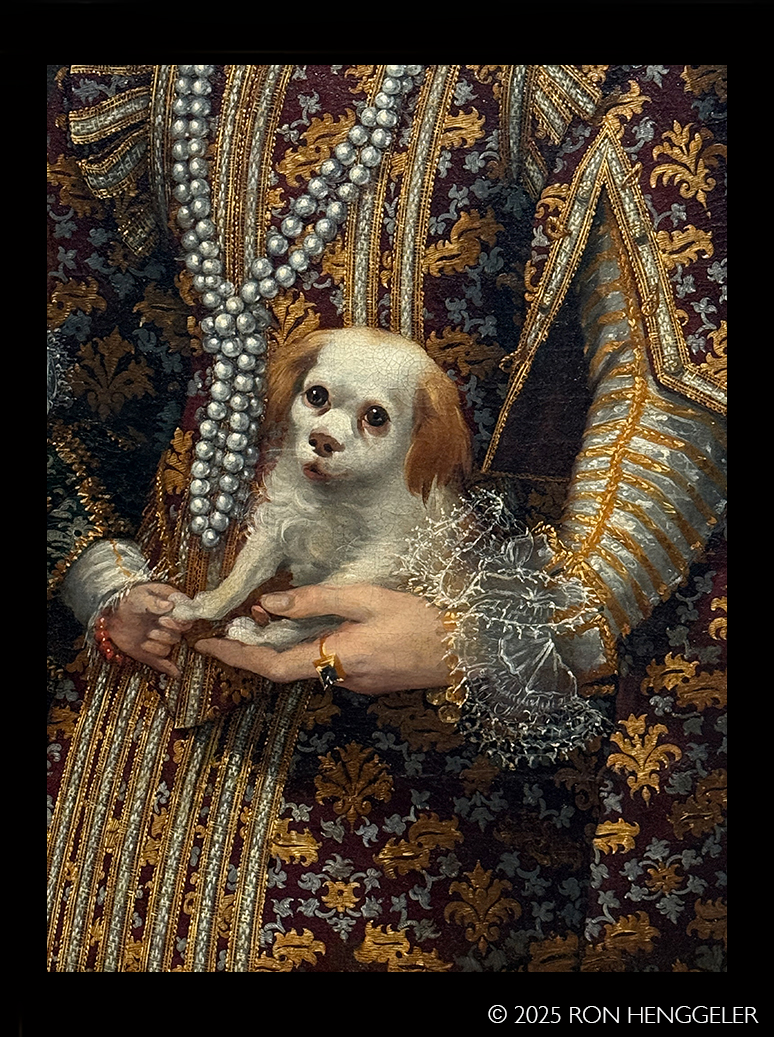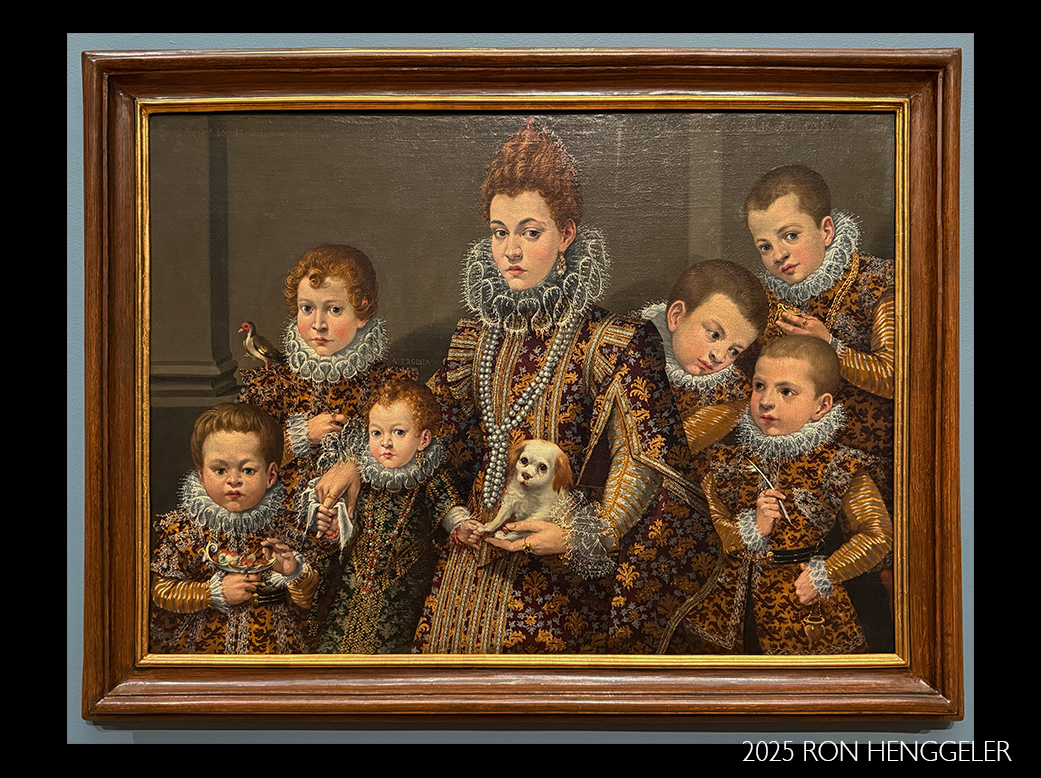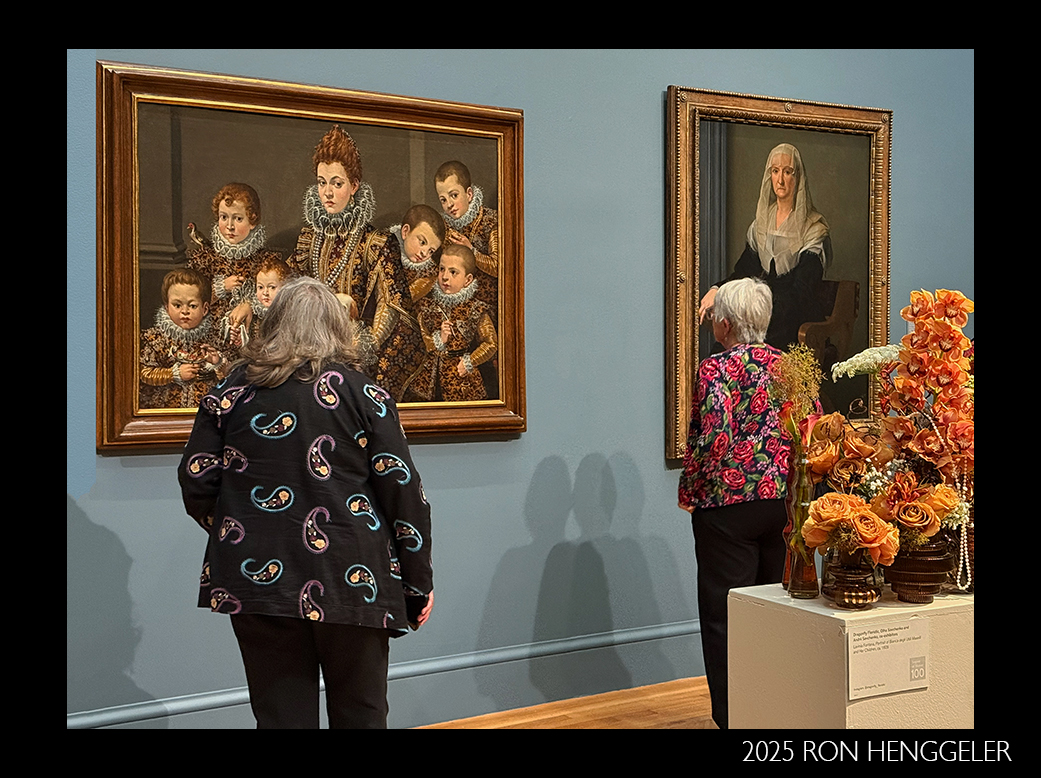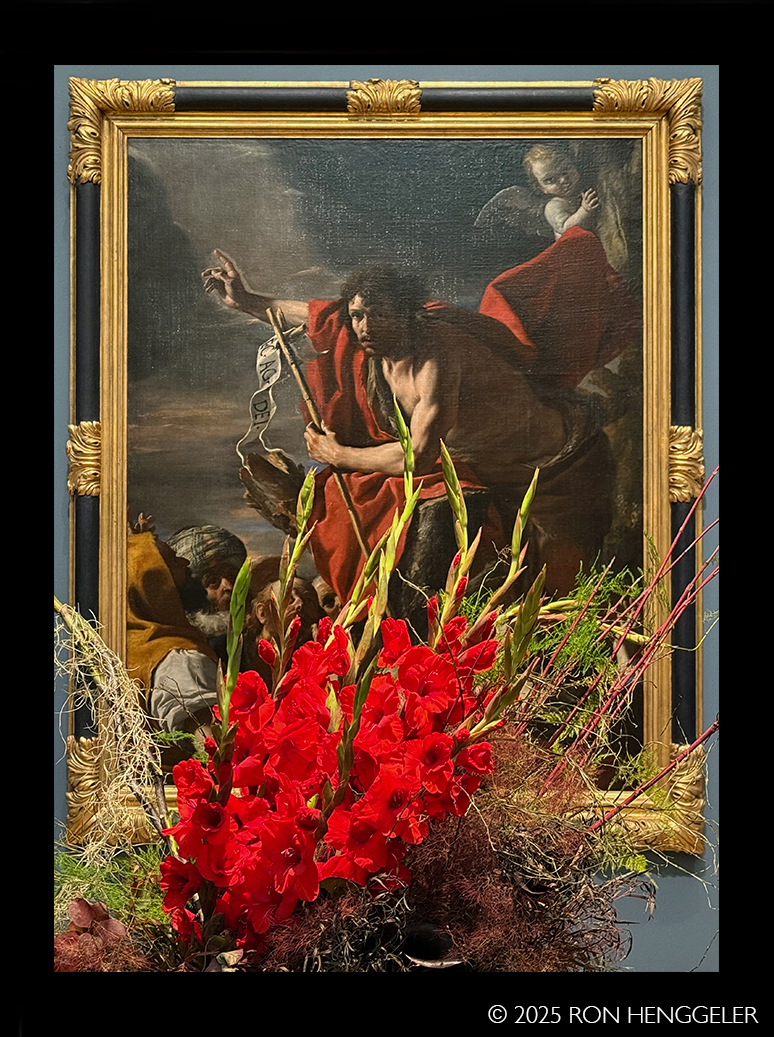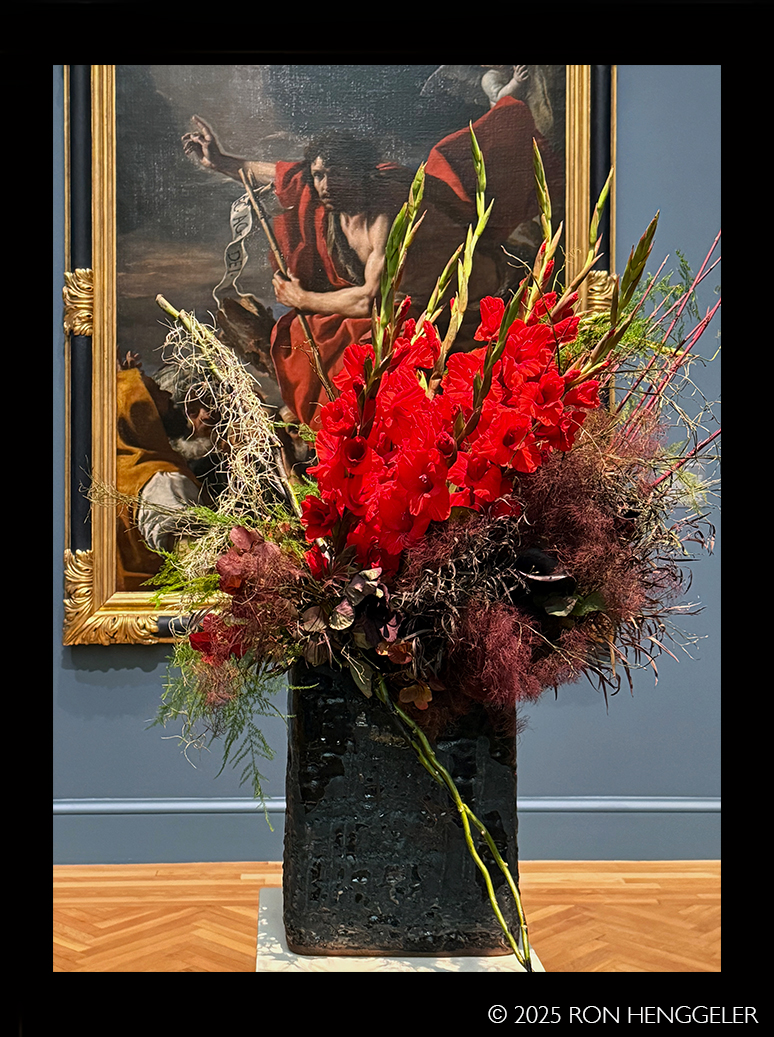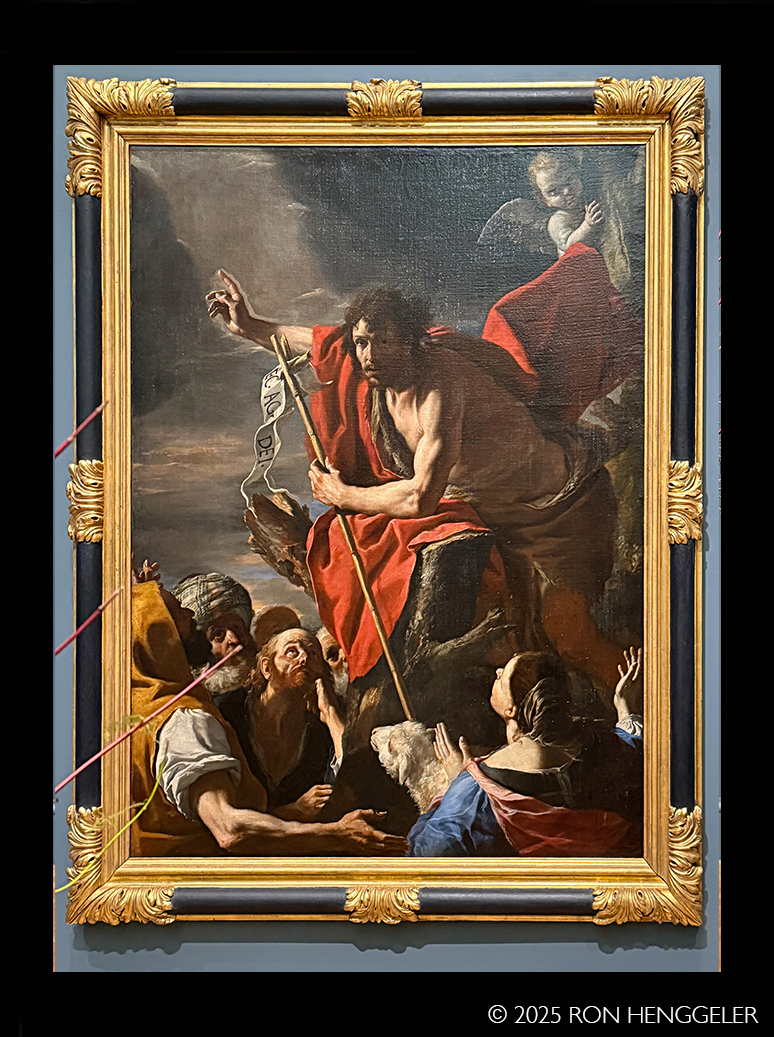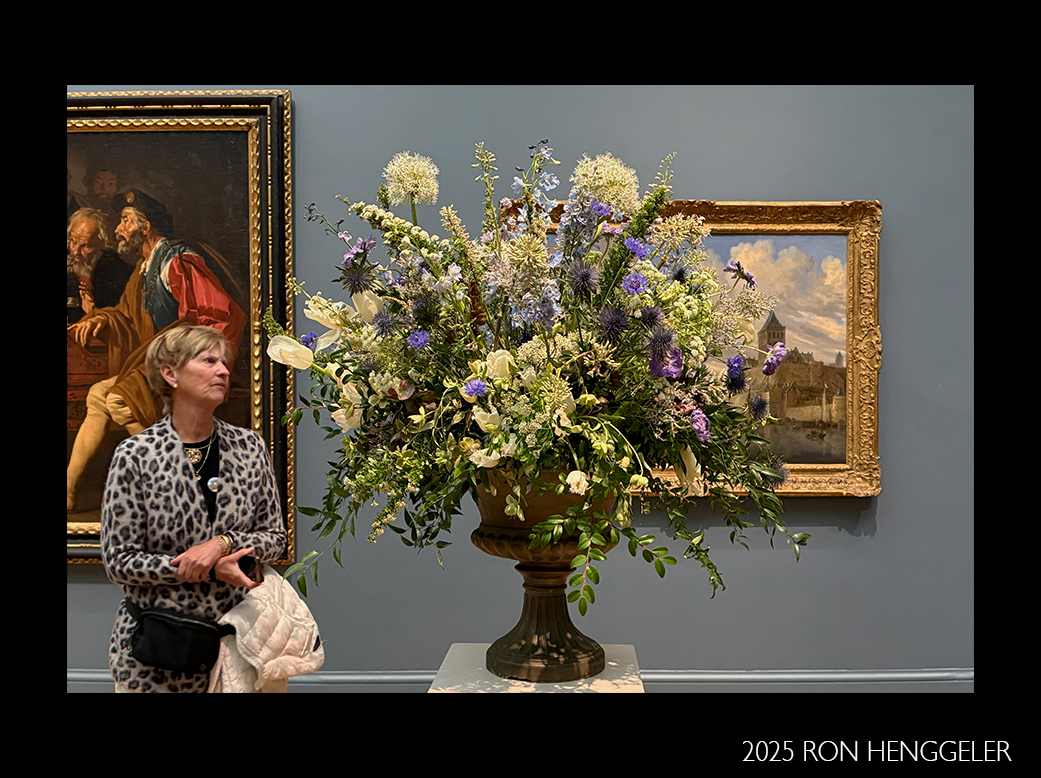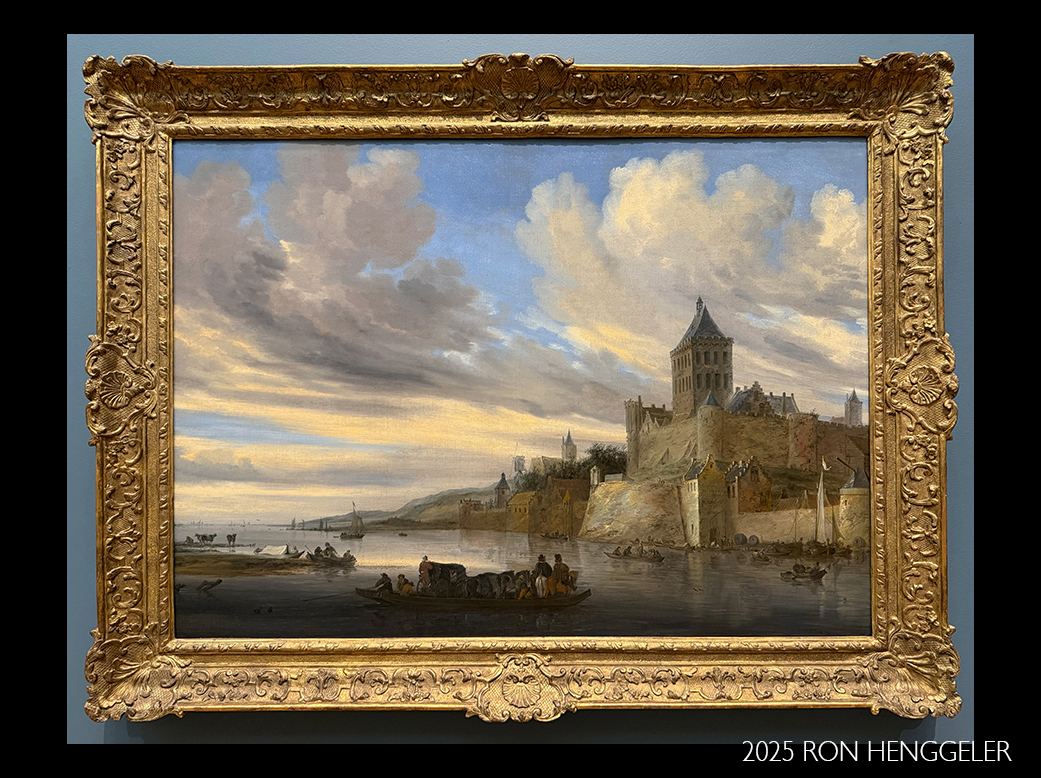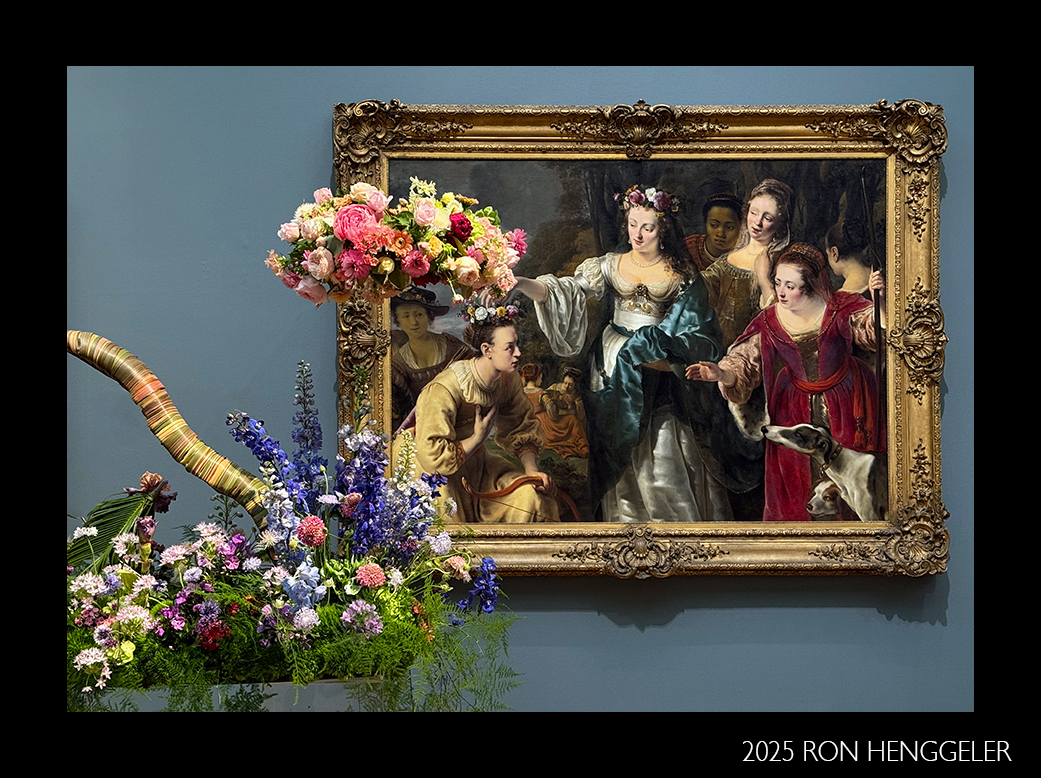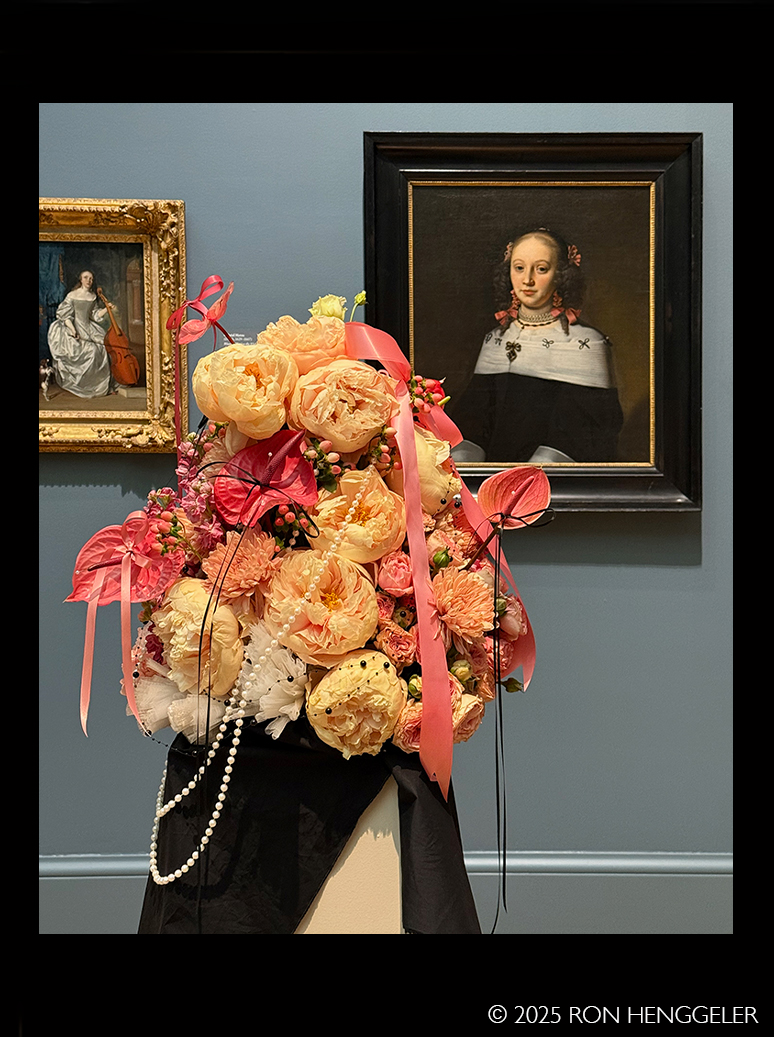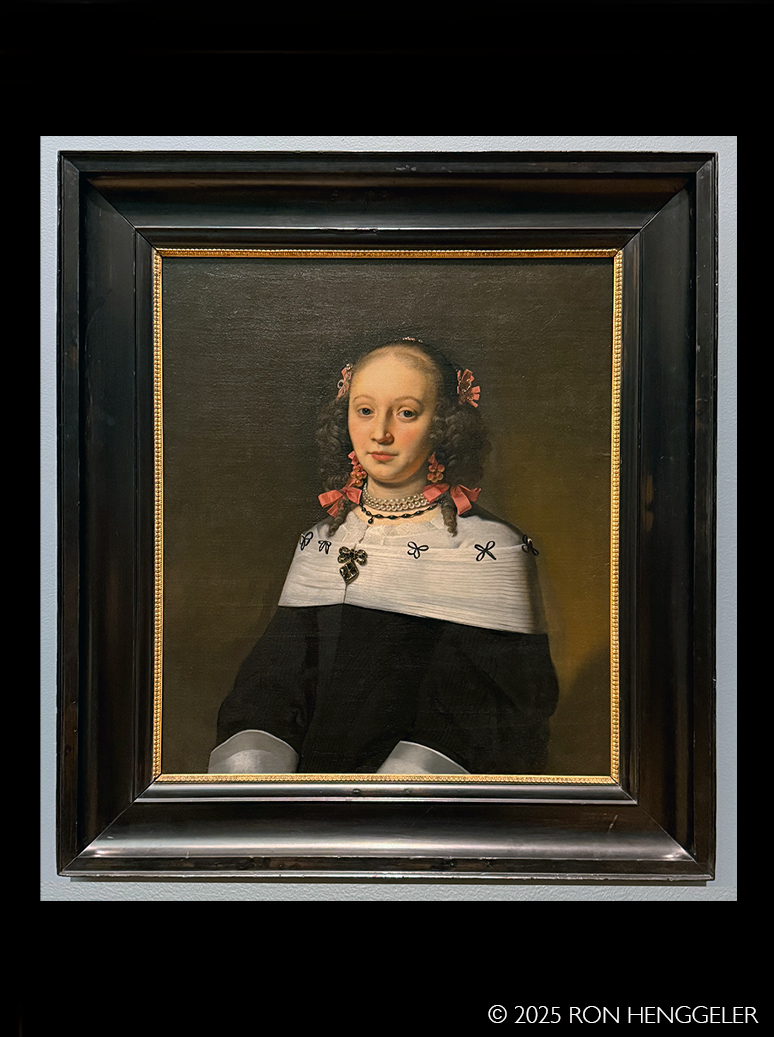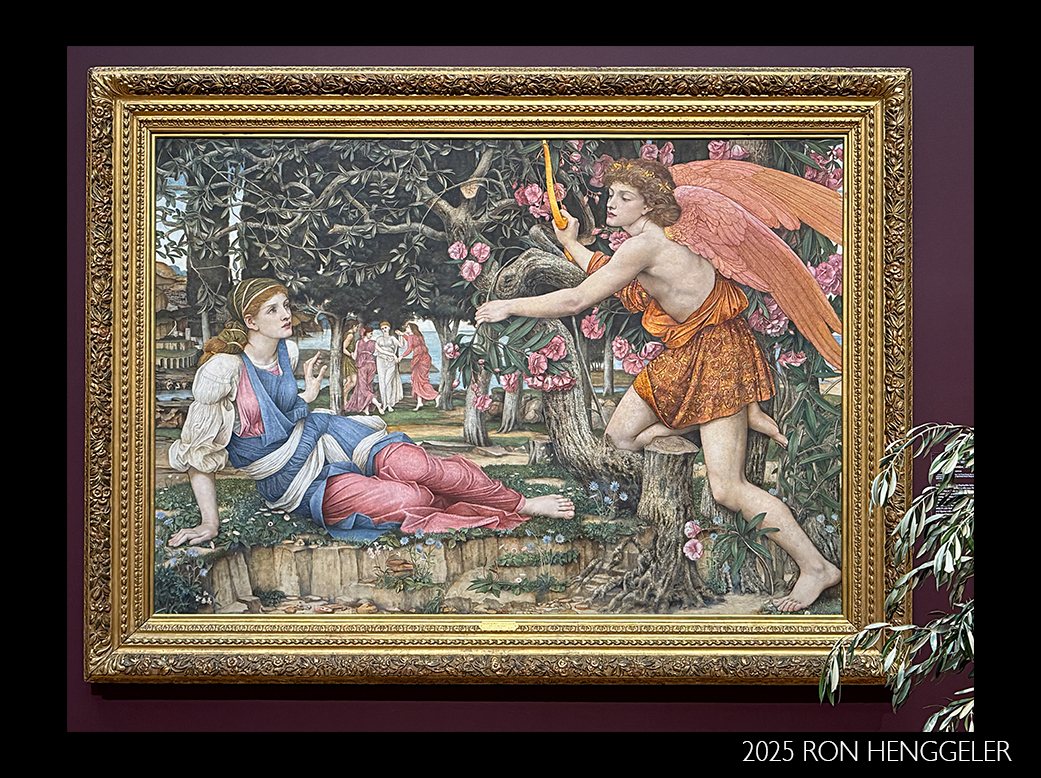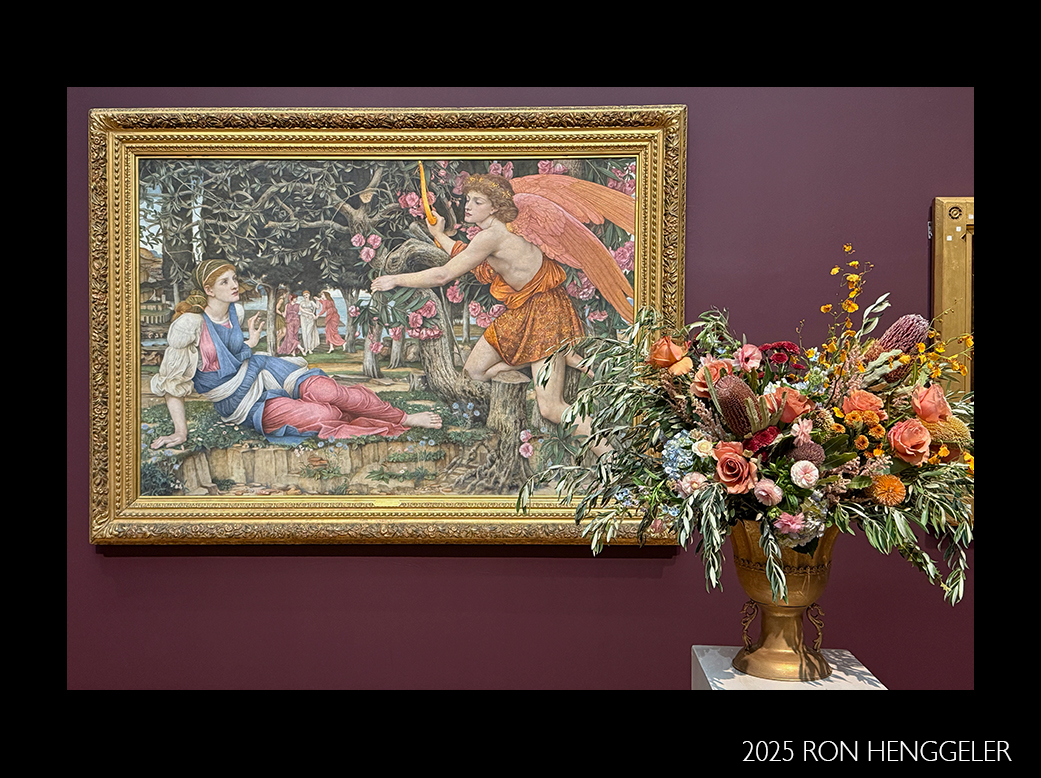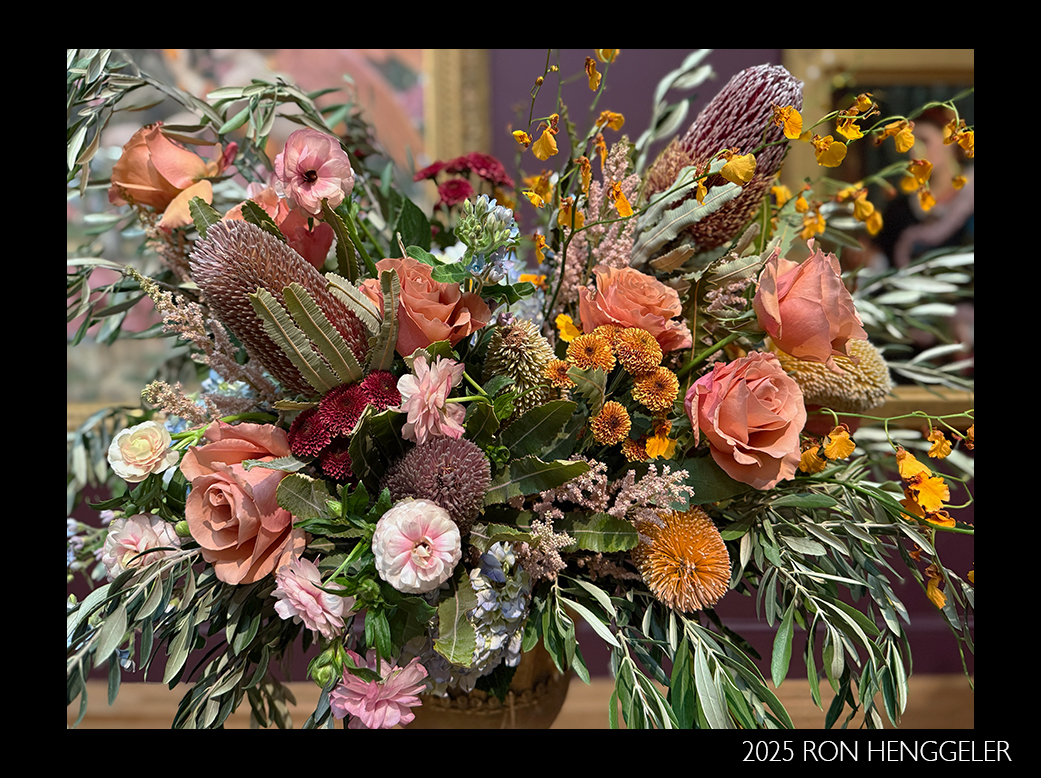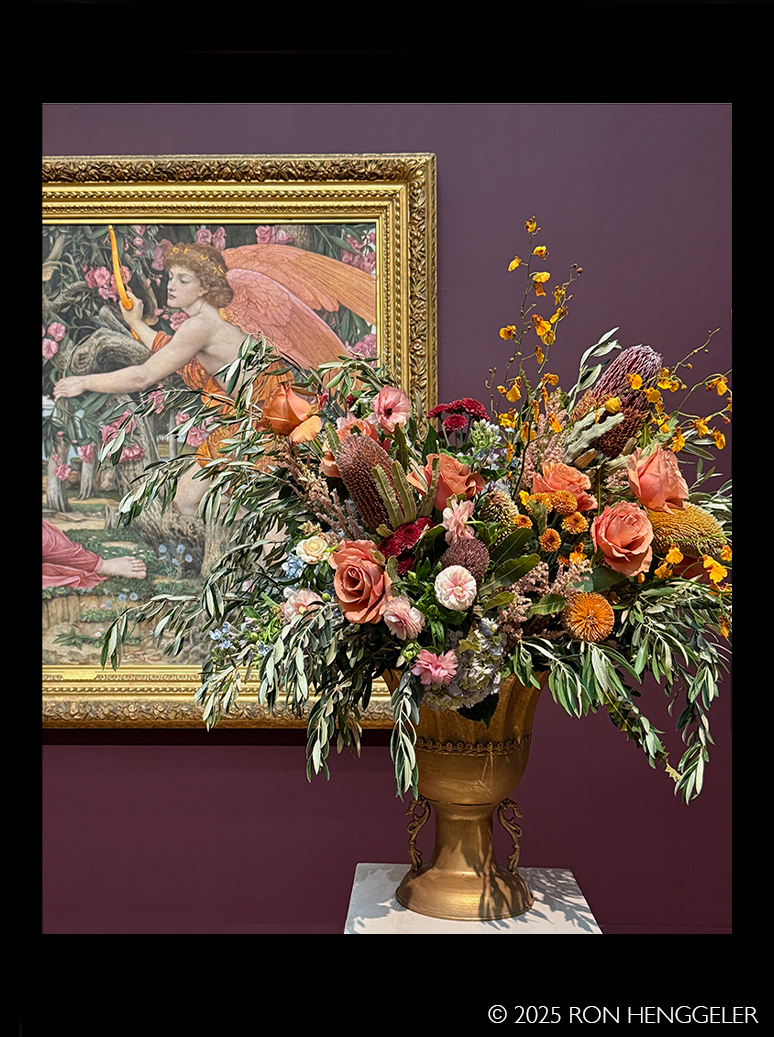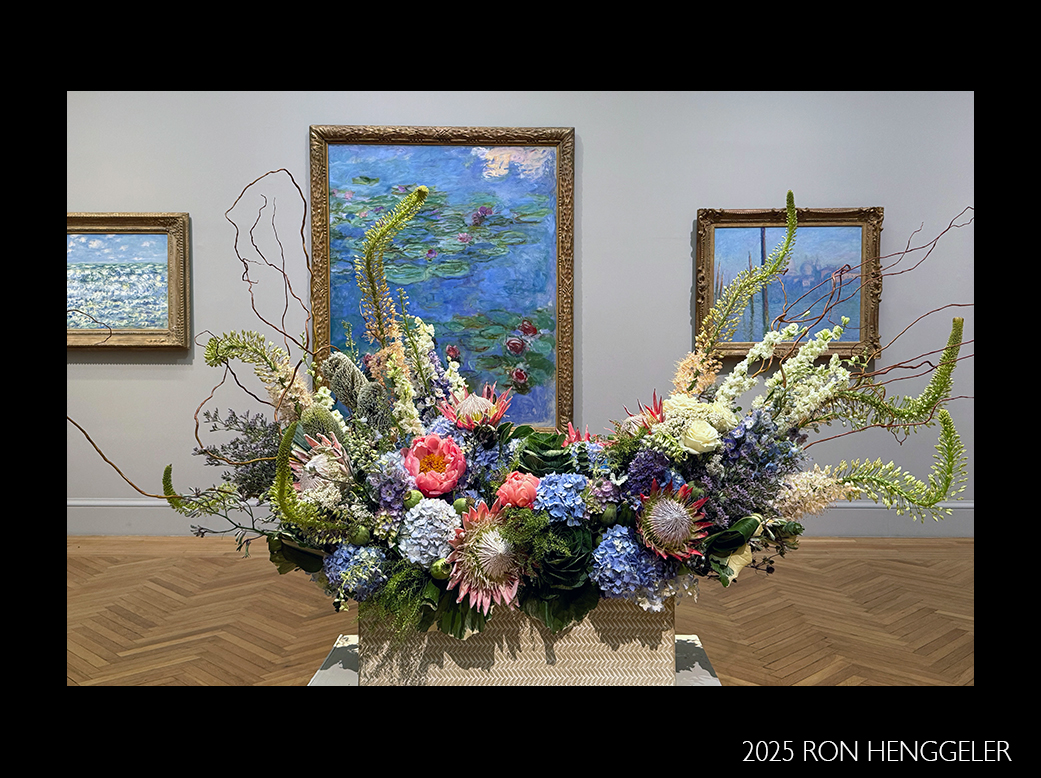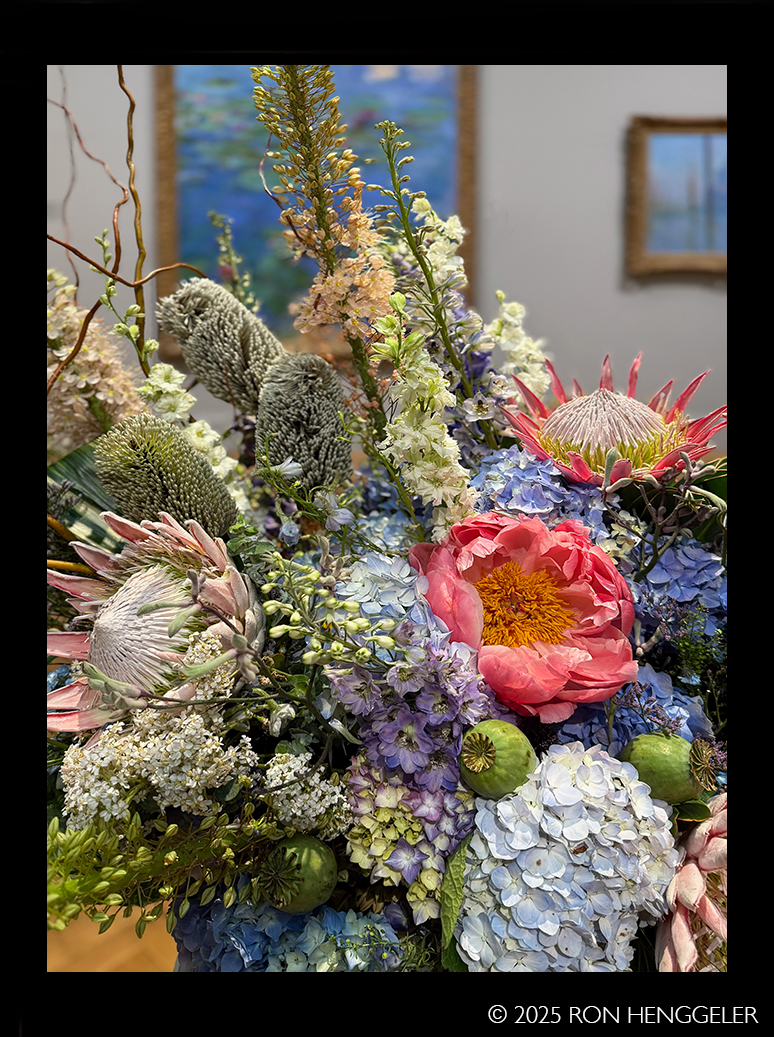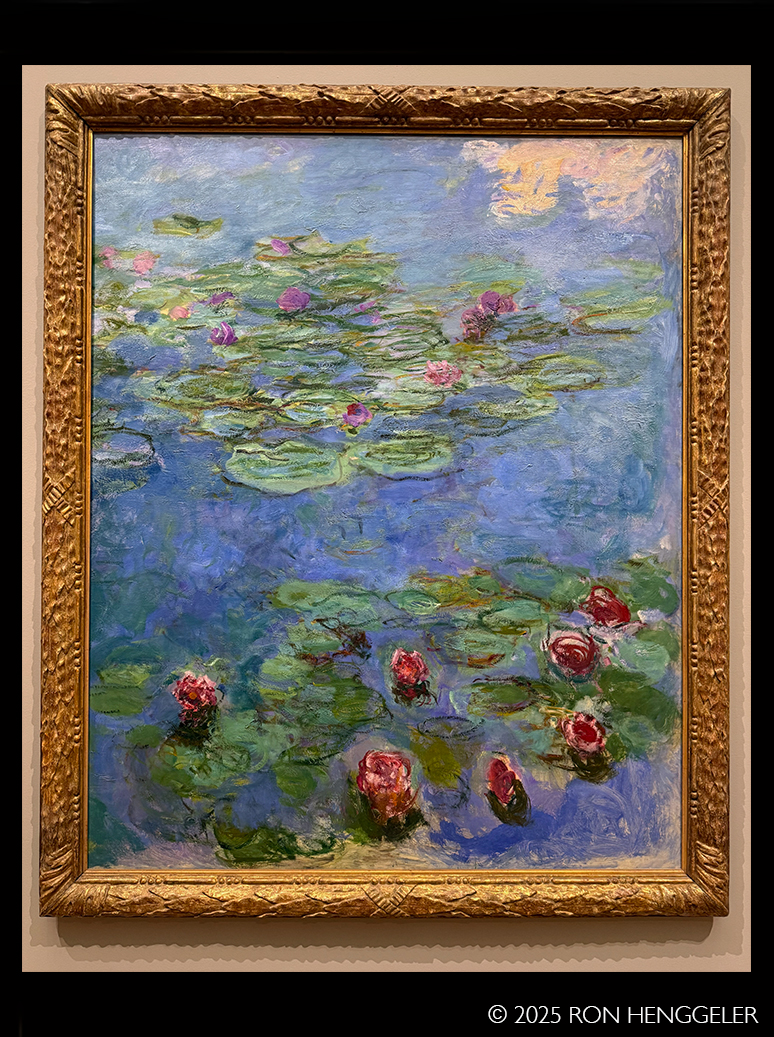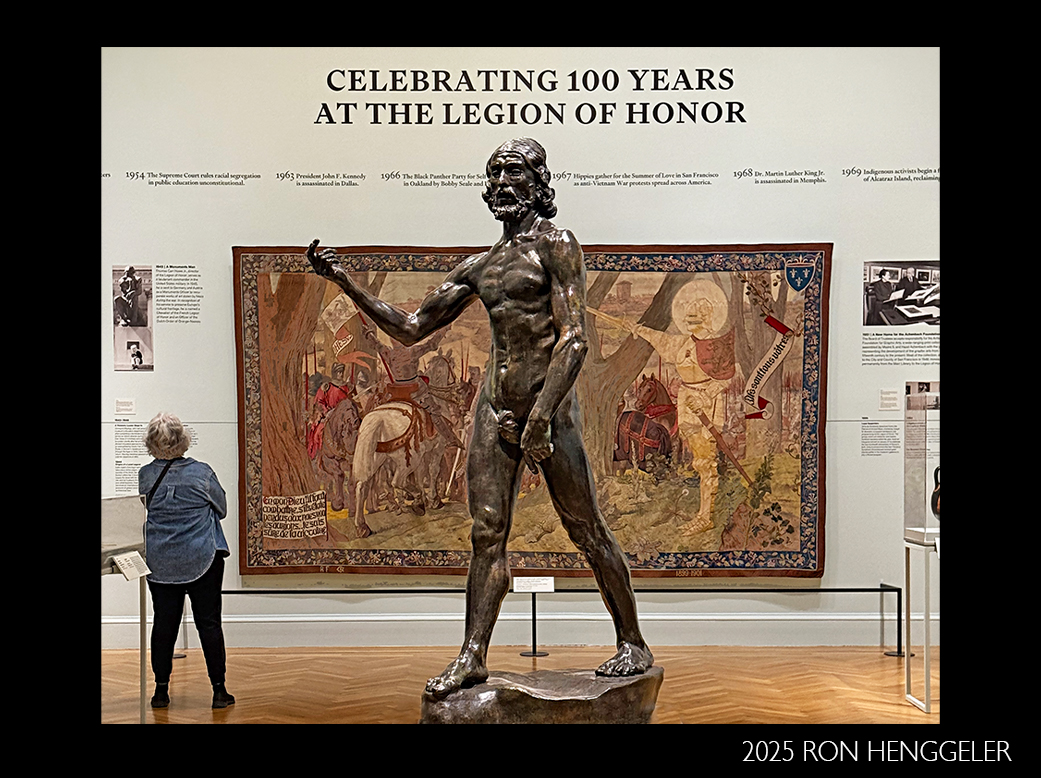| |
June 4, 2025
Bouquets to Art at the Legion of Honor |
|
| |
|
|
| |
A friend and I recently attended the Bouquets to Art exhibit at the Legion of Honor Museum in San Francisco.
Bouquets to Art features floral displays throughout the museum’s galleries. For the first time in the 41-year history of Bouquets to Art, the Legion of Honor was also included in the annual event as part of the museum’s 100th anniversary celebrations.
Here are some of the photos from my visit to the Legion of Honor in San Francisco. |
|
|
|
| |
|
|
| |
|
|
|
| |
Bouquets to Art 2025
June 3rd to the 8th |
|
| |
|
|
|
| |
|
|
| |
|
|
|
| |
|
|
| |
|
|
|
| |
|
|
| |
|
|
|
| |
|
|
| |
|
|
|
| |
|
|
| |
|
|
|
| |
|
|
| |
|
|
|
| |
|
|
| |
|
|
|
| |
Anne, Viscountess Townshend (Later Marchioness Townshend), 1779-1780
Oil on canvas
By Joshua Reynolds (English, 1723-1792)
As the Royal Academy of Art's first president (1768-1792), Reynolds dominated English painting in the second half of the eighteenth century. An admirer of the art of antiquity, he often included classical themes, poses, and statuary in his portraits. Here the carved relief at left depicts the Judgment of Paris, a popular mythological narrative. However, Reynolds included only two of the myth's three goddesses; in a witty and flattering conceit, Paris appears to offer the golden apple to the viscountess, implying that she is Venus, the third and fairest. |
|
| |
|
|
|
| |
|
|
| |
|
|
|
| |
Detail of: The Call to Arms
1879
(cast 1915)
Auguste Rodin (French, 1840-1917)
Tbe Call to Arms was Rodin's entry to a contest for a public monument commemorating the defense of Paris during the Franco-Prussian War (1870-1871). The composition shows a range of artistic influences, from the slumped male body, reminiscent of Michelangelo's dead Christs, to the anguished face of the angel, a reference to François Rude's sculptural relief on the Arc de Triomphe. Rodin's unorthodox approach to a public monument led to his elimination in the first round. As he later wrote, "I... still often ask myself why the hell I ever entered.... My group must have appeared too violent, too intense."
|
|
| |
|
|
|
| |
Materials Used
3D printed PLA, dianthus, fern, allium, rock, chamomile, chrysanthemum, Veronica |
|
| |
|
|
|
| |
|
|
| |
|
|
|
| |
|
|
| |
|
|
|
| |
|
|
| |
|
|
|
| |
Christ and the Magdalene, ca. 1894 (cast ca. 1919)
Plaster
Auguste Rodin (French, 1840-1917)
Cast from a marble version (today in the Thyssen-Bornemisza National Museum, Madrid), this spectacular plaster is one of Rodin's few explicitly religious works. Setting aside traditional depictions of the Crucifixion, he arranged Christ and Mary Magdalene in an erotically charged, quasi-mystical configur-ation. The two figures were taken from previous works and collaged together here, with the Magdalene embracing the crucified Christ, their entwined bodies substituting for the shape of the absent cross. Many artists in this period saw Christ's suffering as an analogue for the tortured creative life; an alternate title for the work is The Genius and Pity.
|
|
| |
|
|
|
| |
|
|
| |
|
|
|
| |
|
|
| |
|
|
|
| |
Victor Hugo, ca. 1917
Marble
Auguste Rodin
(French, 1840-1917)
Rodin had first portayed the novelist, poet, and critic Victor Hugo decades earlier, as evidenced by bronze casts on view in a neighboring gallery. Following the writer's death in 1885 the French government commissioned Rodin to create two different public monuments, neither ultimately realized as intended. Rodin developed this dramatic bust years later, just before his own death. It captures Hugo's likeness within a grand unfinished marble block, in the manner of Michelangelo. While the sixteenth-century master had left his works incomplete due to exigencies of time, Rodin intentionally manufactured a roughed-out aesthetic, paying homage to two artistic role models at once. |
|
| |
|
|
|
| |
|
|
| |
|
|
|
| |
Materials used
Cymbidiums, delphiniums, peonies, and more.
Feathers & lace are hand painted plastic filament.
Silver buttons & painted braided grasses. Satin ribbons light blue & rose tones. |
|
| |
|
|
|
| |
Woman in Neapolitan Costume, ca. 1635
Oil on canvas
Massimo Stanzione (Italian, ca. 1585-ca. 1656)
This enigmatic picture belonged to a seventeenth-century viceroy of Naples, then a possessign of the Spanish crown. It hung in his palace with a group of portrait-like paintings portraying women of different social classes, but the class affiliation of this subject— and, more important, the reason why she holds a chicken —is a mystery. Roosters were associated in early modern Europe with sexual jealousy and marital infidelity, but is this fowl so fraught with moral import?
And what to make of his bearer? The shape of her costume suggests she is a Neapolitan peasant, but its sumptuous materials tell another story. |
|
| |
|
|
|
| |
|
|
| |
|
|
|
| |
Materials Used
Pin cushion protea, found bricks |
|
| |
|
|
|
| |
Allegory of Geometry, 1649
Oil on canvas
Laurent de La Hyre (French, 1606-1656)
Commissioned for the Paris residence of a counsellor to Louis XIV, this canvas originally belonged to a suite of seven, each representing one of the liberal arts: arithmetic, astronomy, dialectic, geometry, grammar, music, and rhetoric. These subjects formed the basis of classical education codified in ancient Rome. In this painting, Geometry holds a compass, right angle, and sheet of proofs by the ancient mathematician Euclid.
Pyramids and a sphinx allude to geometry's origins in Egypt, while a globe references its role in mapmaking.
The painting on the easel illustrates an approach to perspective proposed by one of La Hyre's colleagues at the French Royal Academy, which both artists helped found in 1648.
|
|
| |
|
|
|
| |
|
|
| |
|
|
|
| |
Detail of: Portrait of Bianca degli Utili Maselli and Her Children, ca. 1605
Oil on canvas |
|
| |
|
|
|
| |
Portrait of Bianca degli Utili Maselli and Her Children, ca. 1605
Oil on canvas
Lavinia Fontana (Italian, 1552-1614)
Lavinia Fontana was renowned both for herrich depictions of costumes and jewelry and for her sympathetic portrayals of women and children. Here, the Roman noblewoman Bianca degli Utili Maselli appears with five of her sons and one daughter, the toddler clutching her forefinger. Dressed in blinding splendor-lace and silk, diamonds and pearls— each member of the family holds an accessory: a cup of figs, a pen and inkwell, a puppy, and so on. These items surely carried emblematic meanings linked to the virtues of individual sitters: sweetness, studiousness, fidelity, and others. Bianca bore nineteen children before her premature death. Those portrayed here were probably the six still living by 1605.
This painting is the first work of art created by a woman before 1700 to join the collection of the Legion of Honor.
|
|
| |
|
|
|
| |
|
|
| |
|
|
|
| |
|
|
| |
|
|
|
| |
Materials Used
Curly willow, Spanish moss, smoketree, agonis after dark, calla lily, gladiolus, plumosa fern, Scotch broom, dogwood |
|
| |
|
|
|
| |
Saint John the Baptist Preaching, ca. 1665
Mattia Preti |
|
| |
|
|
|
| |
Materials Used
Scabiosa, Hellebore, Queen Anne's Lace, Eryngium, Mini Calla Lilies, Cornflower, Grand Thomas Garden Roses, Rice Flower, California Buckeye, Delphinium, Dutch Tulips, Allium, Astilbe, Caspia, Spirea, Italian
Ruscus, Huckleberry Greens |
|
| |
|
|
|
| |
River View of Nijmegen with the Valkbof, 1648
Oil on canvas
Salomon van Ruysdael (Dutch, ca. 1600/02-1670)
On a hill overlooking a river looms the Valkhof, a medieval fortress built on ancient foundations in the Dutch city of Nijmegen, near the German border.
Salomon van Ruysdael likely based his view on more muted examples by his friendly rival Jan van Goyen.
Here, bright colors animate the billowing clouds and soft light reflected on the water, placidly interrupted by fishing boats and a ferry. Painted in 1648, when the Dutch Republic secured independence from Spain, the landscape depicts a site the Dutch proudly associated with the triumphant revolt of their ancestors, the Batavians, against the Roman Empire, |
|
| |
|
|
|
| |
|
|
| |
|
|
|
| |
|
|
| |
|
|
|
| |
The Crowning of Mirtillo, 1650
Oil on canvas
Ferdinand Bol (Dutch, 1616-1680)
Ferdinand Bol, a successful pupil of Rembrandt, represented in luminous color this episode from an Italian play popular in the Netherlands. The tragicomedy, set in an idyllic wilderness, recounts the forbidden love of the shepherd Mirtillo for a nymph, Amarillis. Mirtillo, at left, disguised as a maiden, competes in a kissing game with Amarillis's attendants. After the lovers share a passionate kiss, Amarillis crowns Mirtillo the winner.
In Amarillis's retinue, Bol included a dark-skinned woman, possibly inspired by an actual member of Amsterdam's Black community. Though slavery was illegal in the Dutch Republic, painters often depicted Black people as servants of white subjects. |
|
| |
|
|
|
| |
Materials Used
Pink Hydrangeas
Pink Stock
Pink Lisianthus
Pink Garden Spray Roses
Pink Hypericum
Pink Altiriums
Pastelegance Peach Peonies
White Roses
Lynette Mums
Pink, White, and Black Ribbon White and Black Pearls Black Fabric Mum Nets |
|
| |
|
|
|
| |
Portrait of a Woman, ca. 1655
Oil on canvas
Unidentified artist (Dutch, 17th century)
Portraiture flourished in the seventeenth-century Dutch Republic as more individuals of middling and high status could afford to buy images of themselves and their family members. This unidentified woman likely sat for a portraitist in the 1650s, when the type of glamorous outfit she wears was in fashion. Delicate ribbons adorn her curls, casting a rosy color onto her reflective pearl earrings. These, along with the pearl necklace and diamond brooch on her chest-each A produced from costly materials imported from Asia by the Dutch East India Company-firmly place her in the upper ranks of Dutch society. The painter remains unidentified. |
|
| |
|
|
|
| |
Materials Used
Pink Hydrangeas
Pink Stock
Pink Lisianthus
Pink Garden Spray Roses
Pink Hypericum
Pink Altiriums
Pastelegance Peach Peonies
White Roses
Lynette Mums
Pink, White, and Black Ribbon White and Black Pearls Black Fabric Mum Nets |
|
| |
|
|
|
| |
Love and the Maiden, 1877
Oil and gold leaf on canvas
John Roddam Spencer Stanhope (English, Yorkshire 1829-1908 Florence)
Second-generation Pre-Raphaelite John Roddam Spencer Stanhope owned a villa near Florence, which enabled him to study Italian art firsthand, This painting is considered his masterpiece, and it debuted at the opening exhibition of London's progressive Grosvenor Gallery in 1877. At this time, the Aesthetic movement was introduced through works that prioritized beauty over narrative, Inspired by the Italian Renaissance artist Sandro Botticelli, Stanhope painted the landscape and figures with both color harmony and compositional balance-from the delicate flowers in the foreground to the rhythm of the dancers in the central background. |
|
| |
|
|
|
| |
|
|
| |
|
|
|
| |
|
|
| |
|
|
|
| |
|
|
| |
|
|
|
| |
Detail of: Love and the Maiden, 1877
Oil and gold leaf on canvas |
|
| |
|
|
|
| |
Materials Used
Hydrangea, peonies, king protea, banksia, ligularia, aspidistra, thistle, statice, delphinium hybrid, larkspur, kangaroo paw, kale, curly willow, dusty miller, eremurus, cottage yarrow, iris, eucalyptus |
|
| |
|
|
|
| |
|
|
| |
|
|
|
| |
Water Lilies, ca. 1914-1917
Oil on canvas
Claude Monet (French, 1840-1926)
Monet is well known for his paintings of water lilies, which he produced late in his life at his garden at Giverny, west of Paris along the Seine. Typical of many works in that series, the perspective here is angled radically downward upon the surface of the lily pond, eliminating both sky and horizon. The flowers are open and deep red, as they would be at the height of summer. |
|
| |
|
|
|
| |
November 9, 2024 – November 2, 2025
This exhibition looks back to the museum’s 1924 opening through its 1990s expansion and into the present day, as well as forward toward a new vision for the future. The museum’s close ties to the communities of San Francisco are brought into focus through collection highlights, rediscovered materials from the museum’s archives, and an expansive timeline. Featuring some of the first additions to the collection, such as an ancient ceramic vase gifted by the queen of Greece and an Auguste Rodin sculpture donated by museum cofounder Alma de Bretteville Spreckels, the exhibition also highlights the museum’s early exhibitions, including one devoted to Diego Rivera. The timeline takes us through the decades, including the 1972 merger with the de Young, the seismic upgrade and expansion after the 1989 Loma Prieta earthquake, and recent interventions by contemporary artists such as Wangechi Mutu. The exhibition is punctuated by images of visitors through the years interacting with Rodin’s famous The Thinker (1904). Front and center in the museum’s courtyard, the sculpture continues to welcome visitors in to explore the art and their own creativity.
|
|
| |
|
|
| |
|
|
|
| |
|
|
| |
|
|
